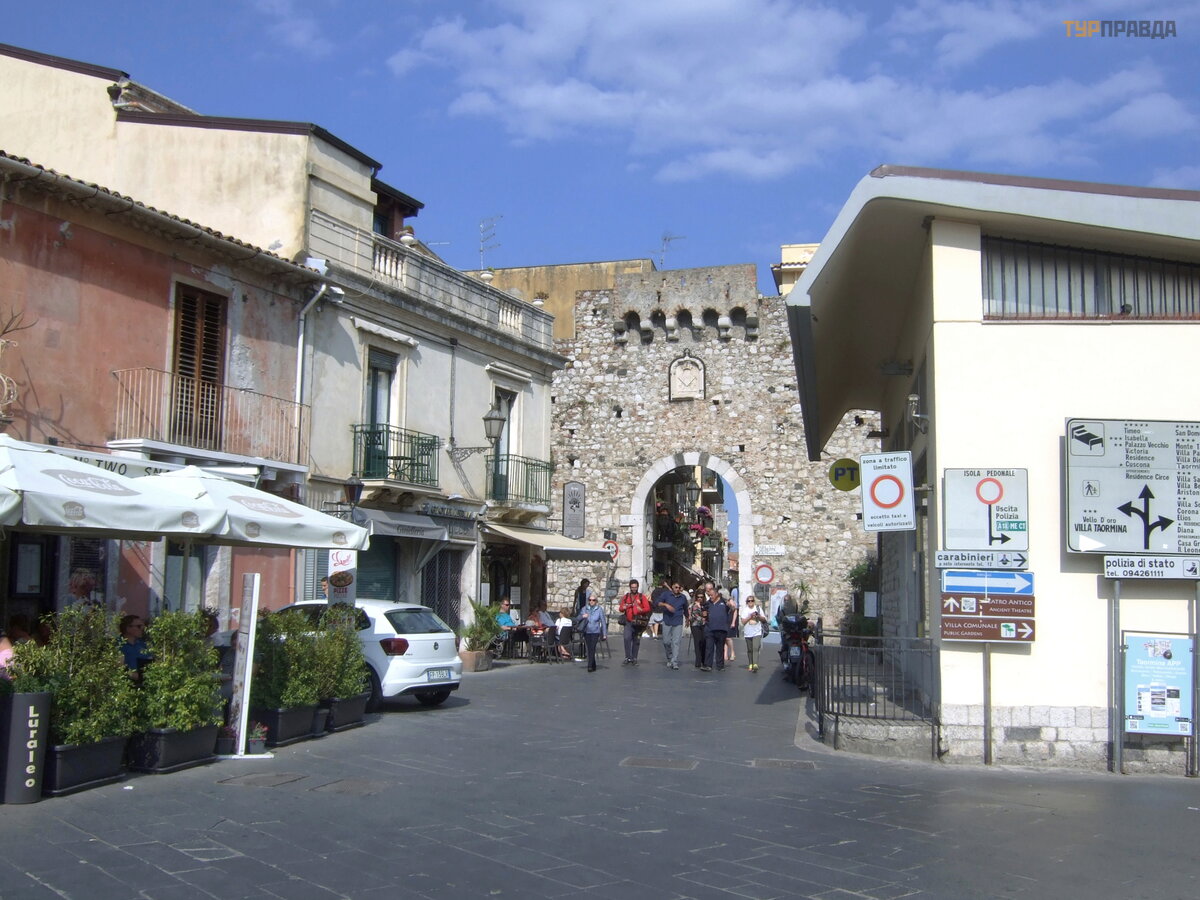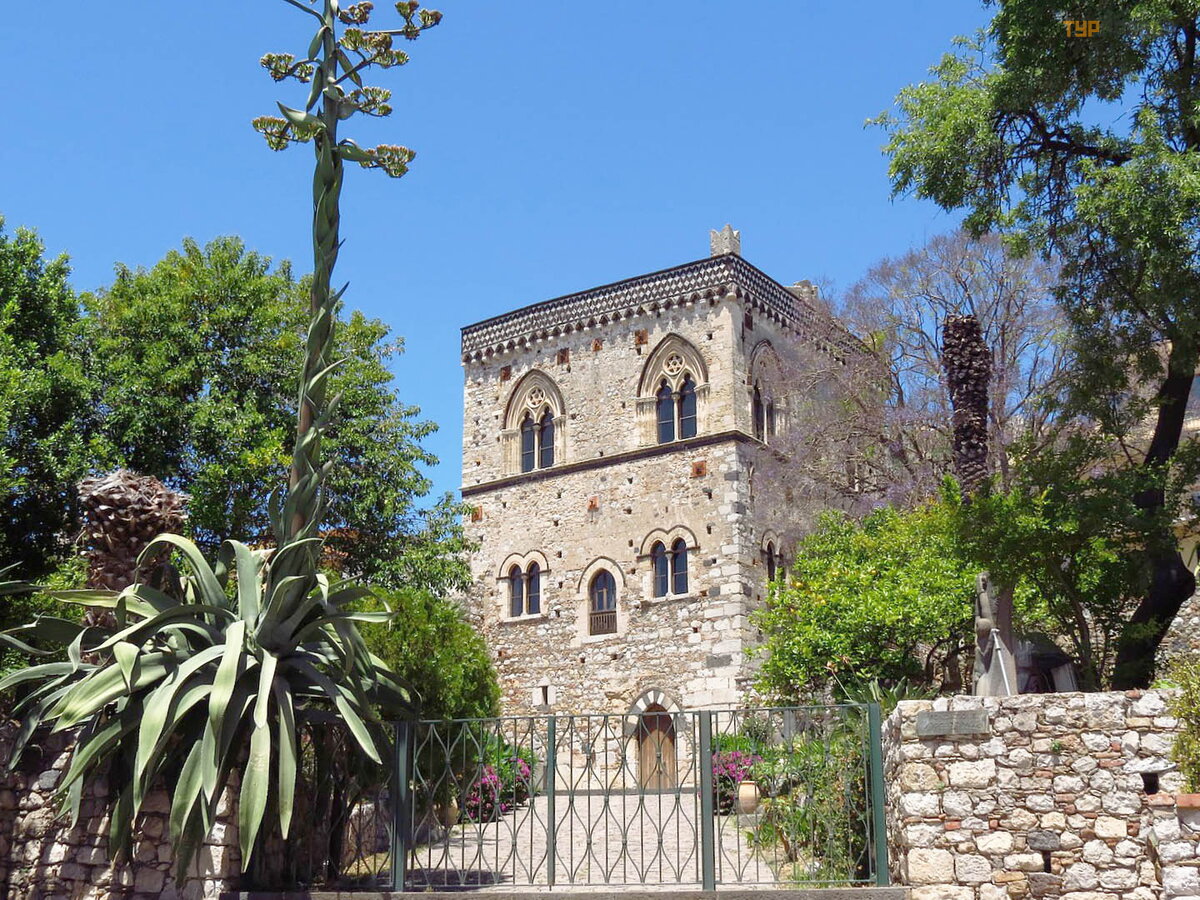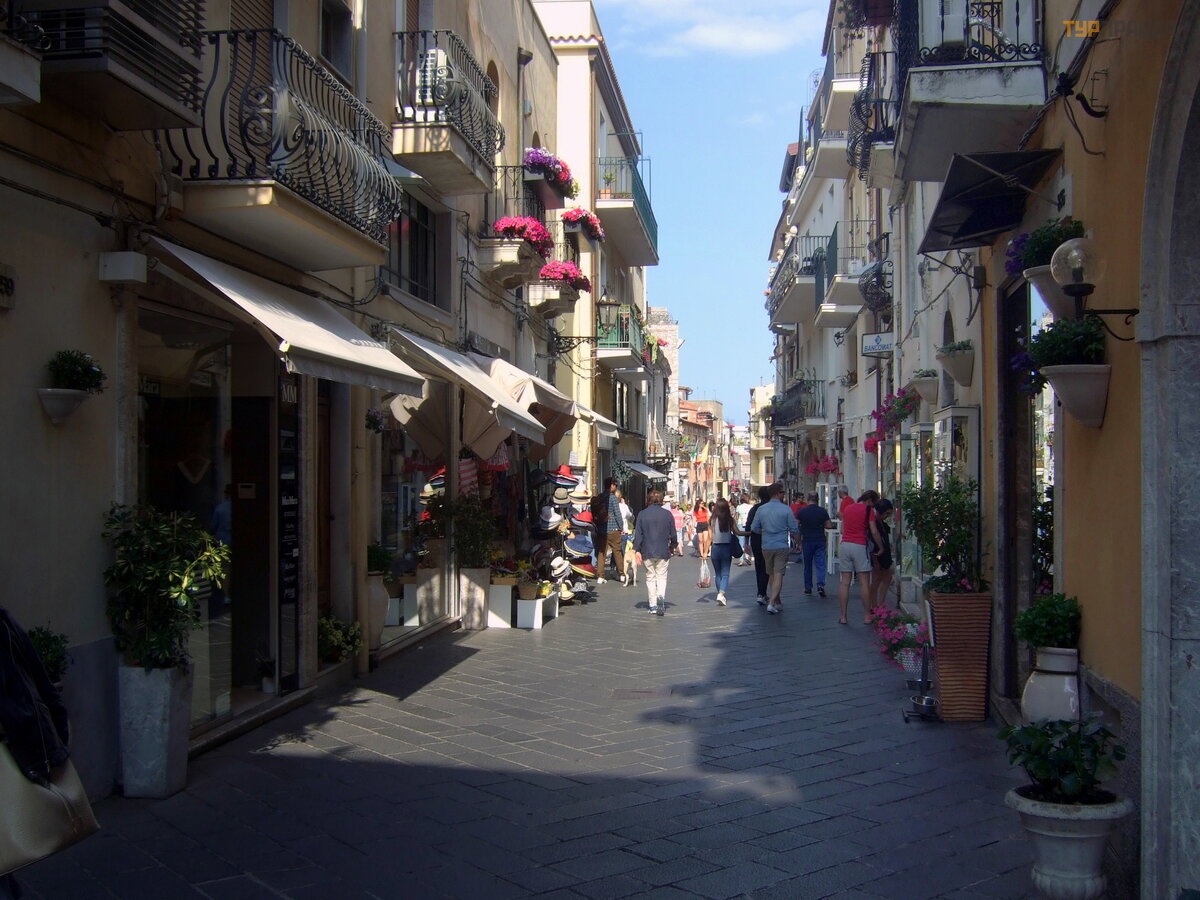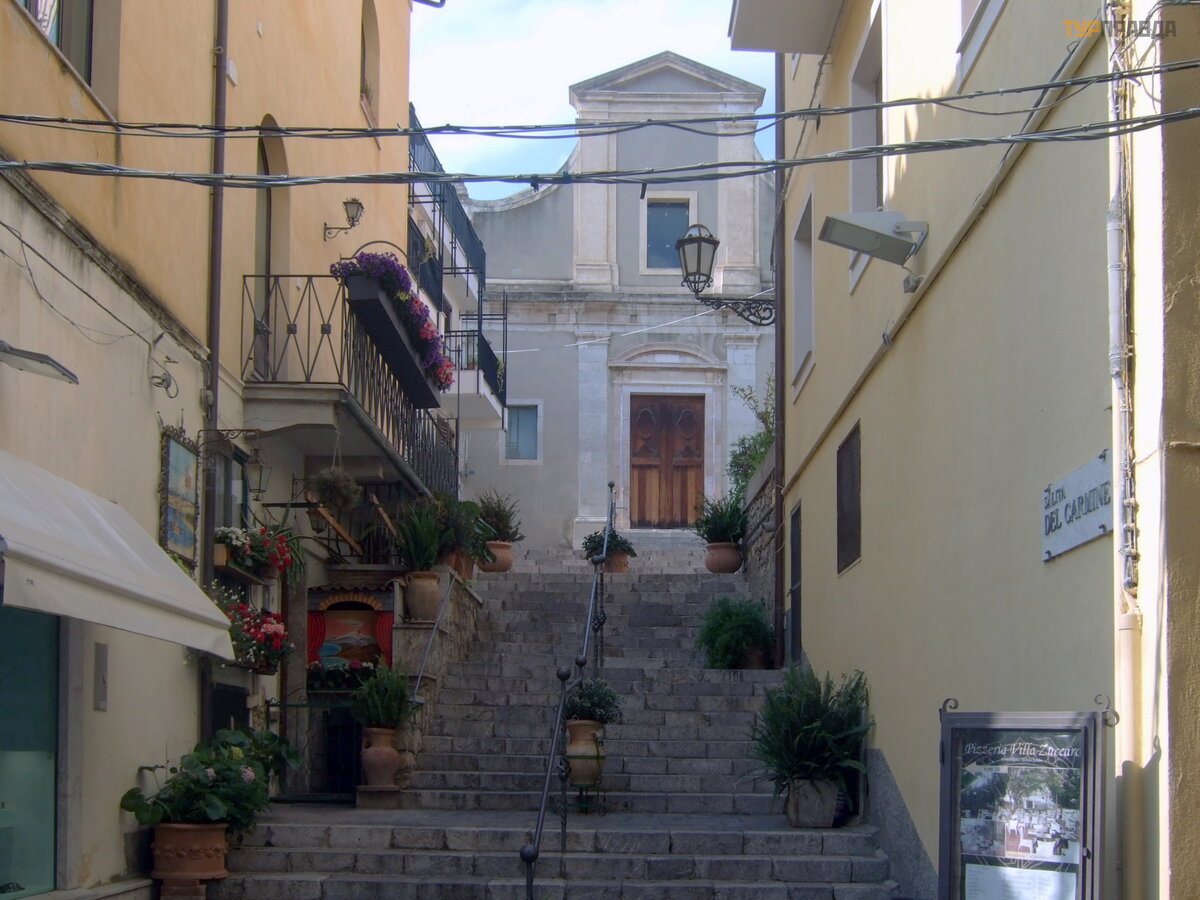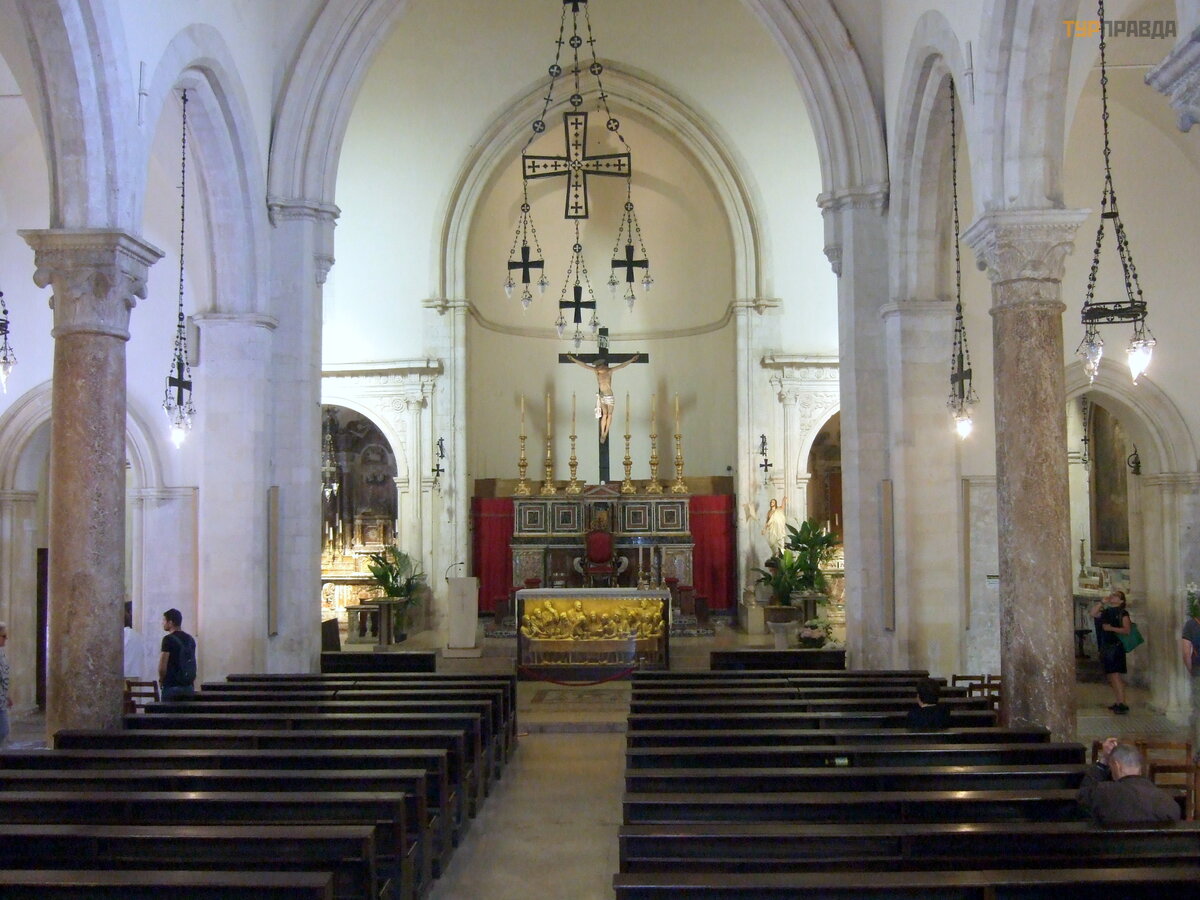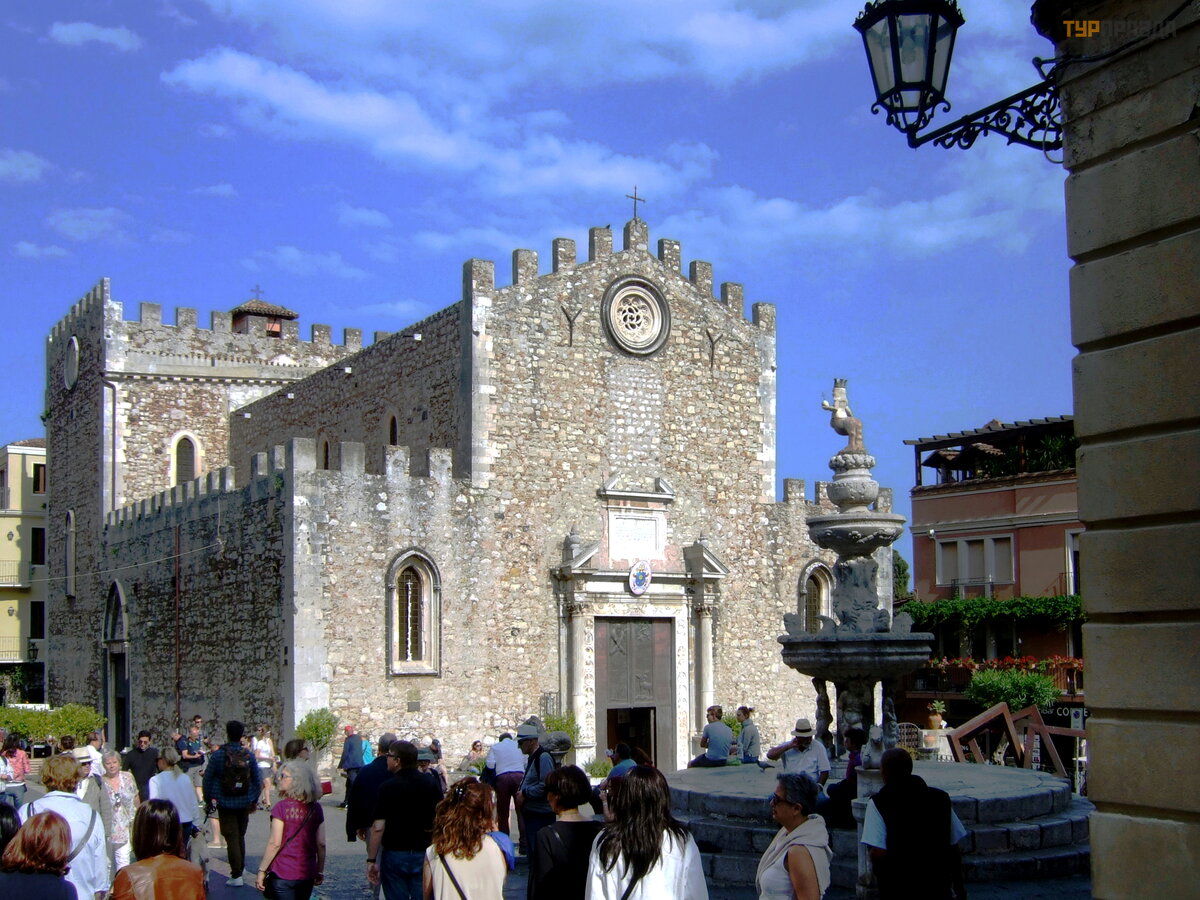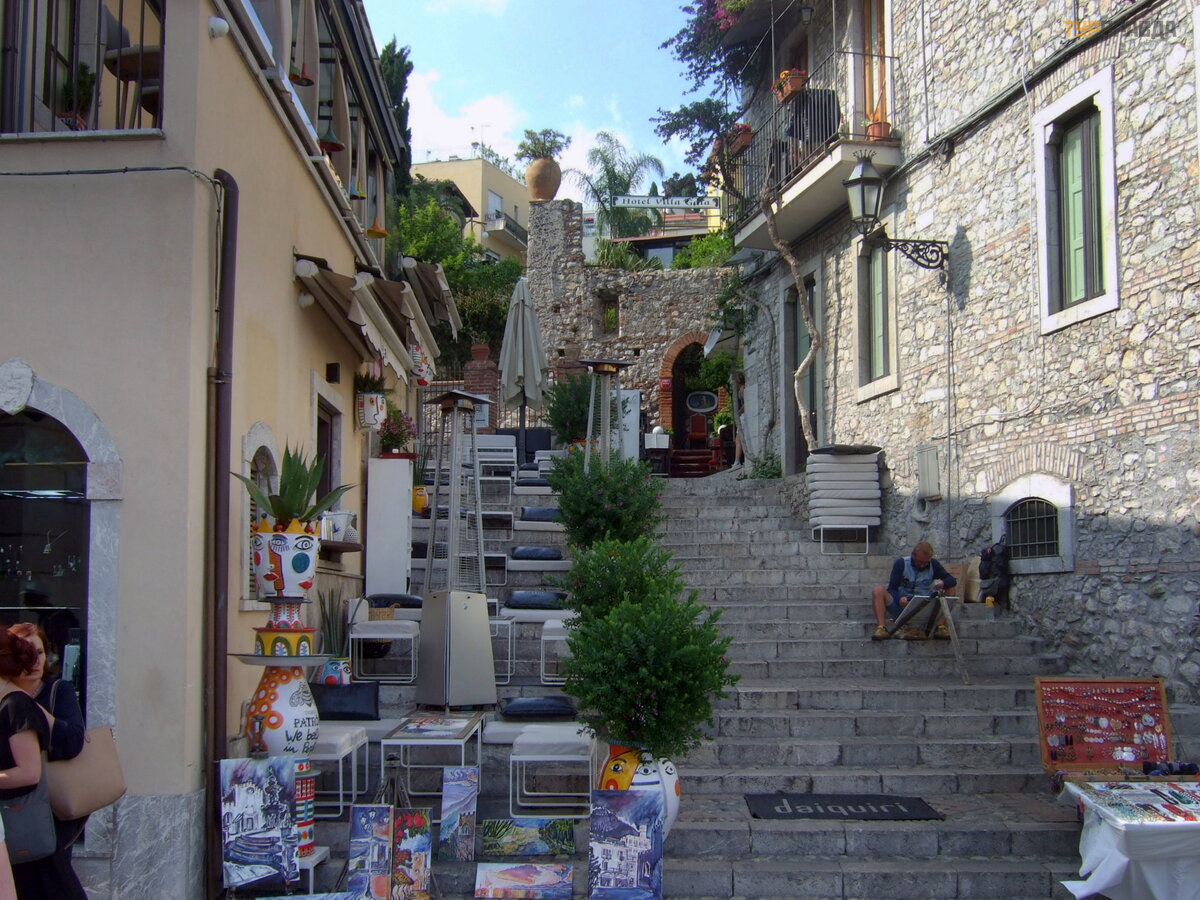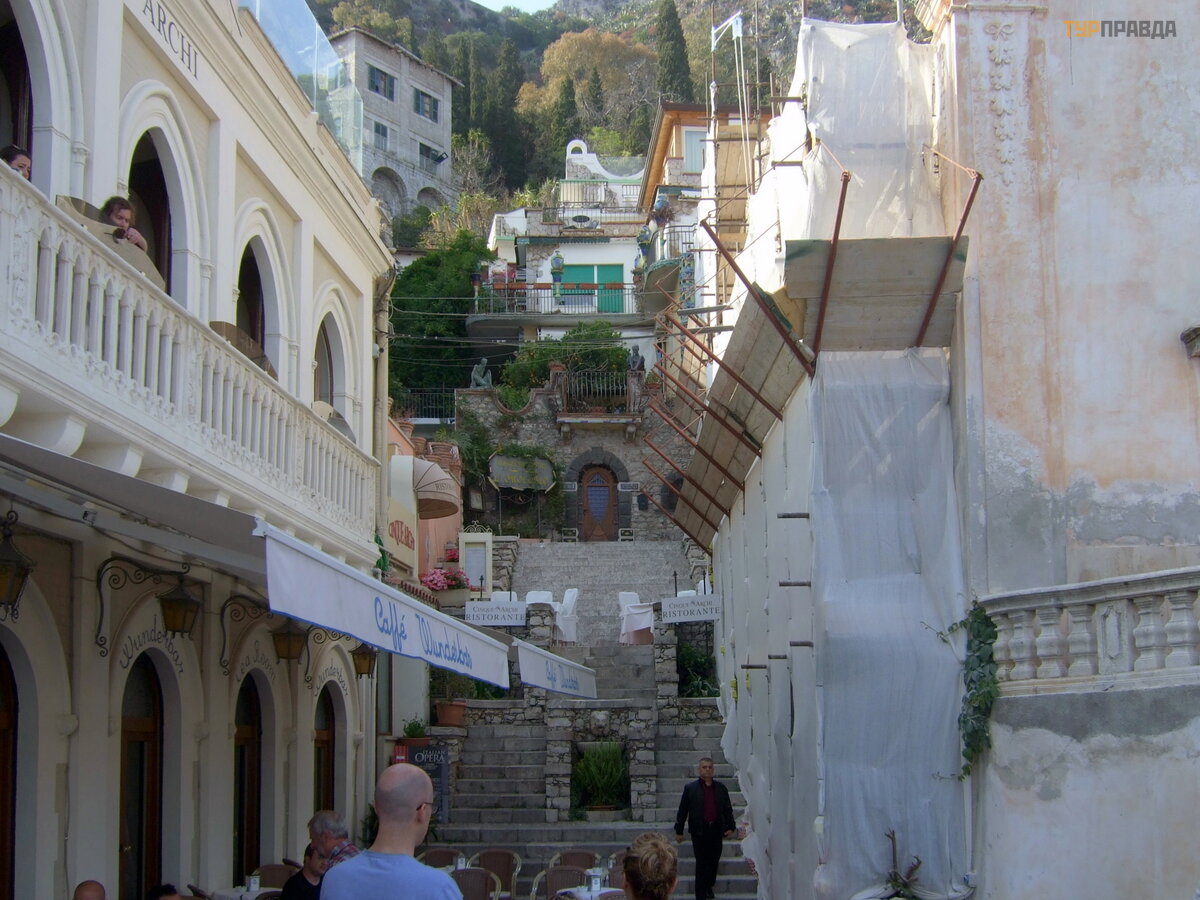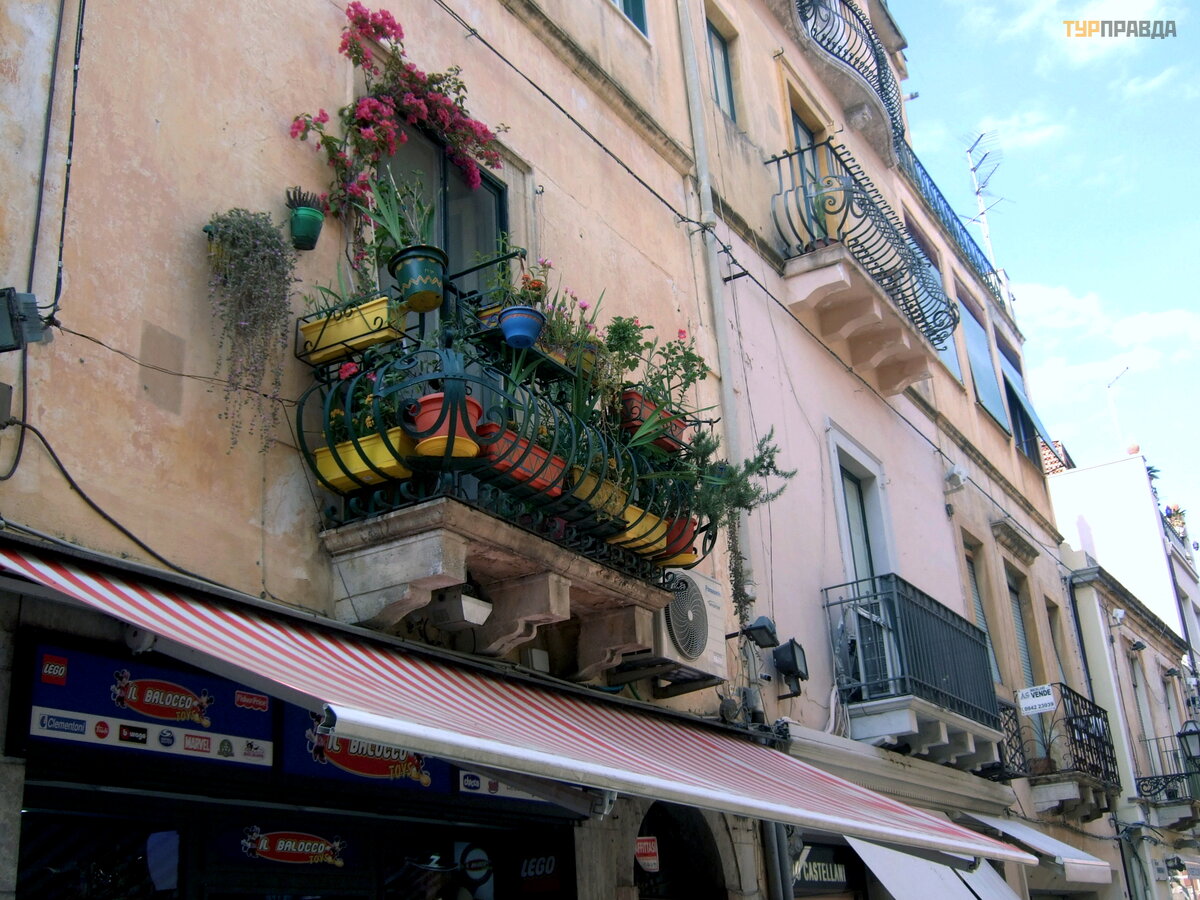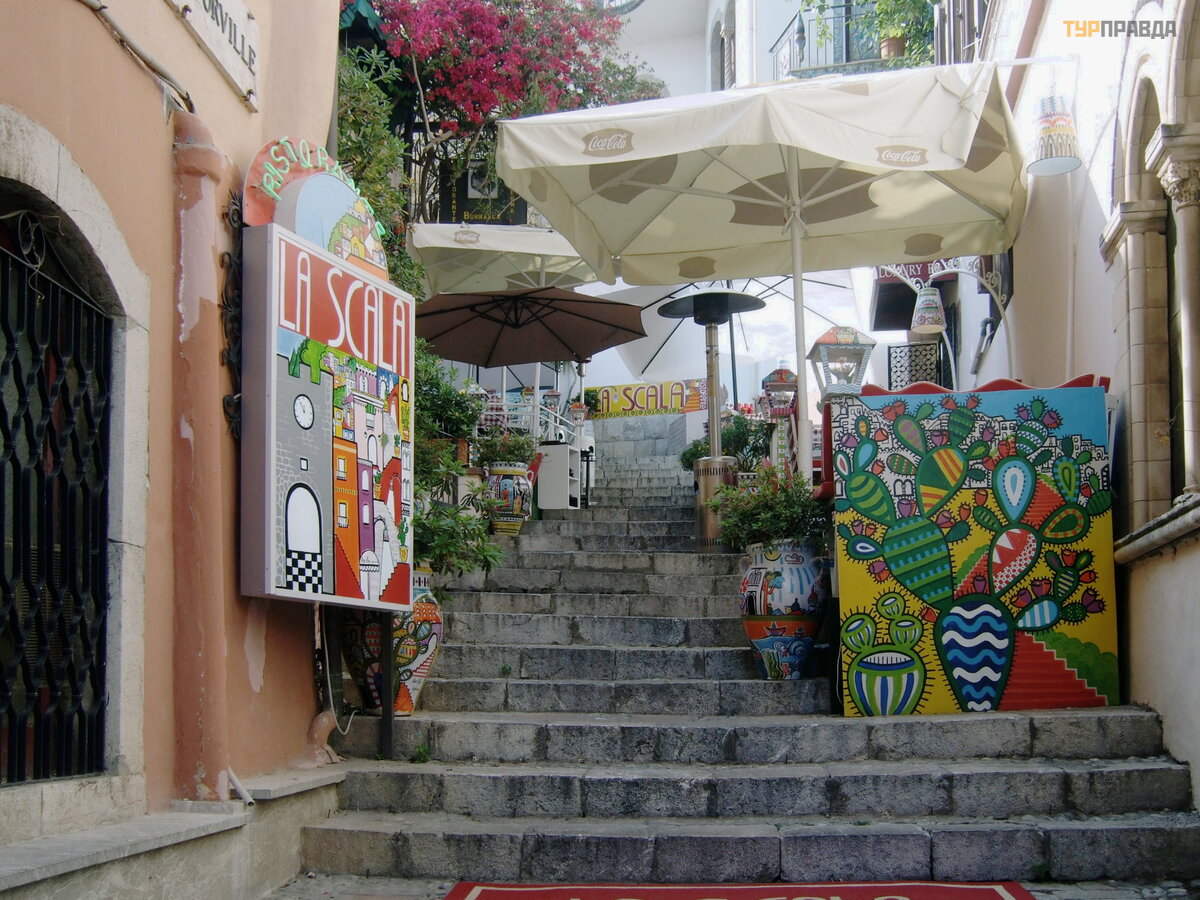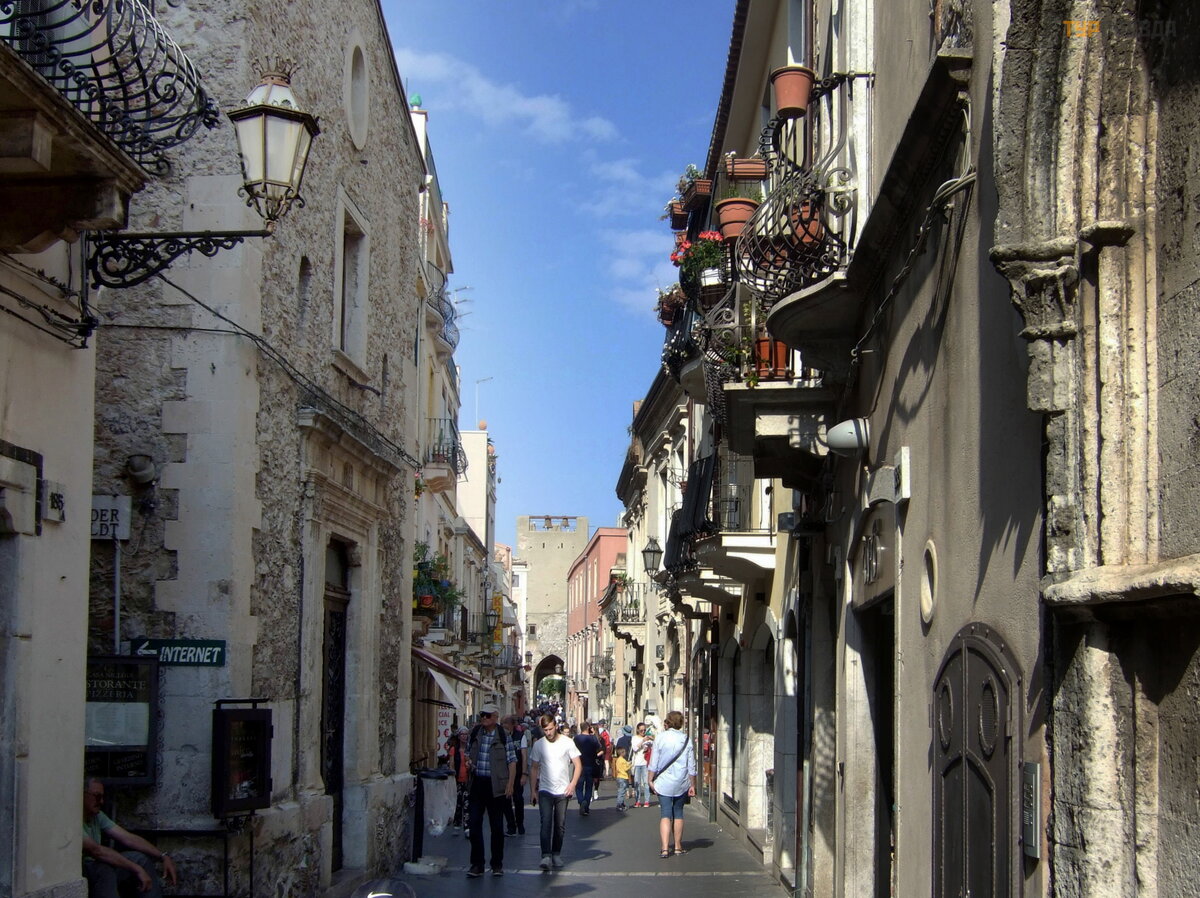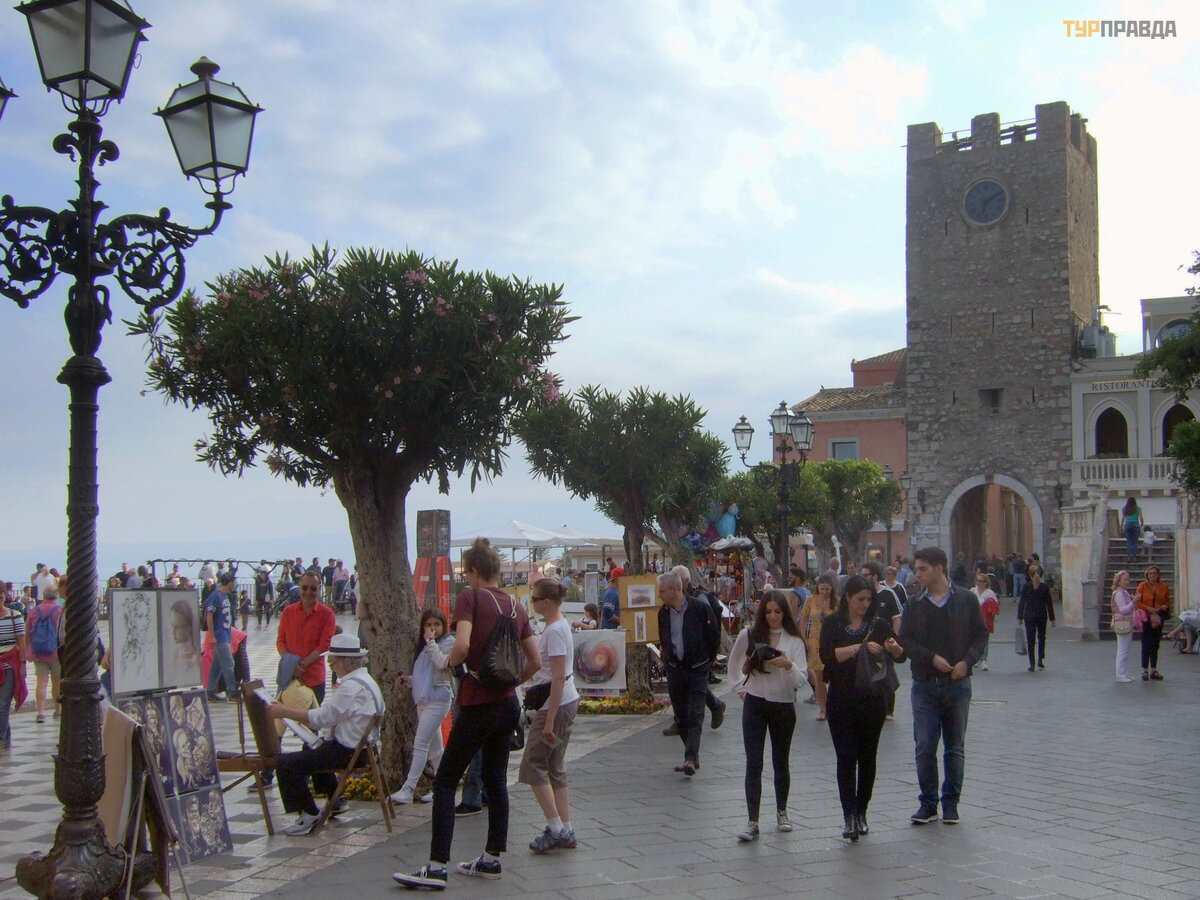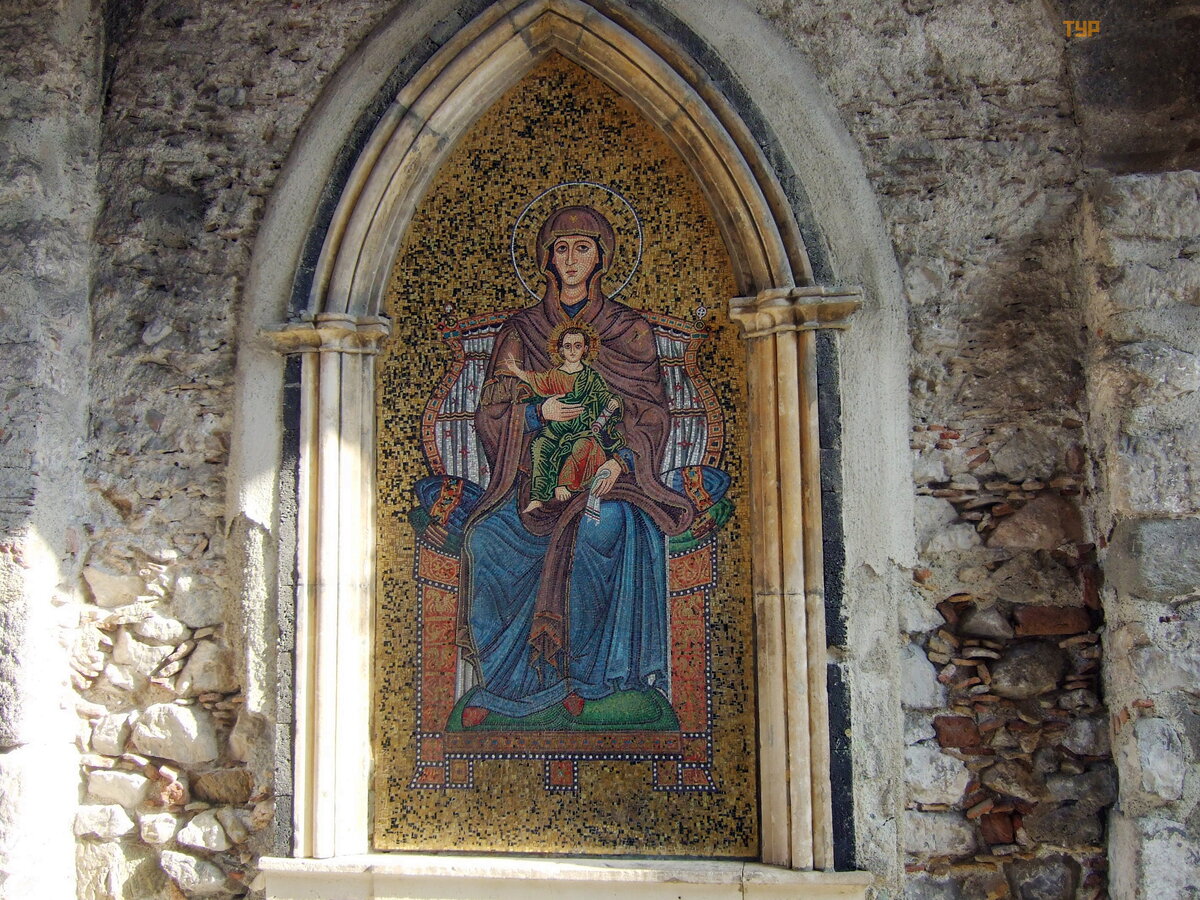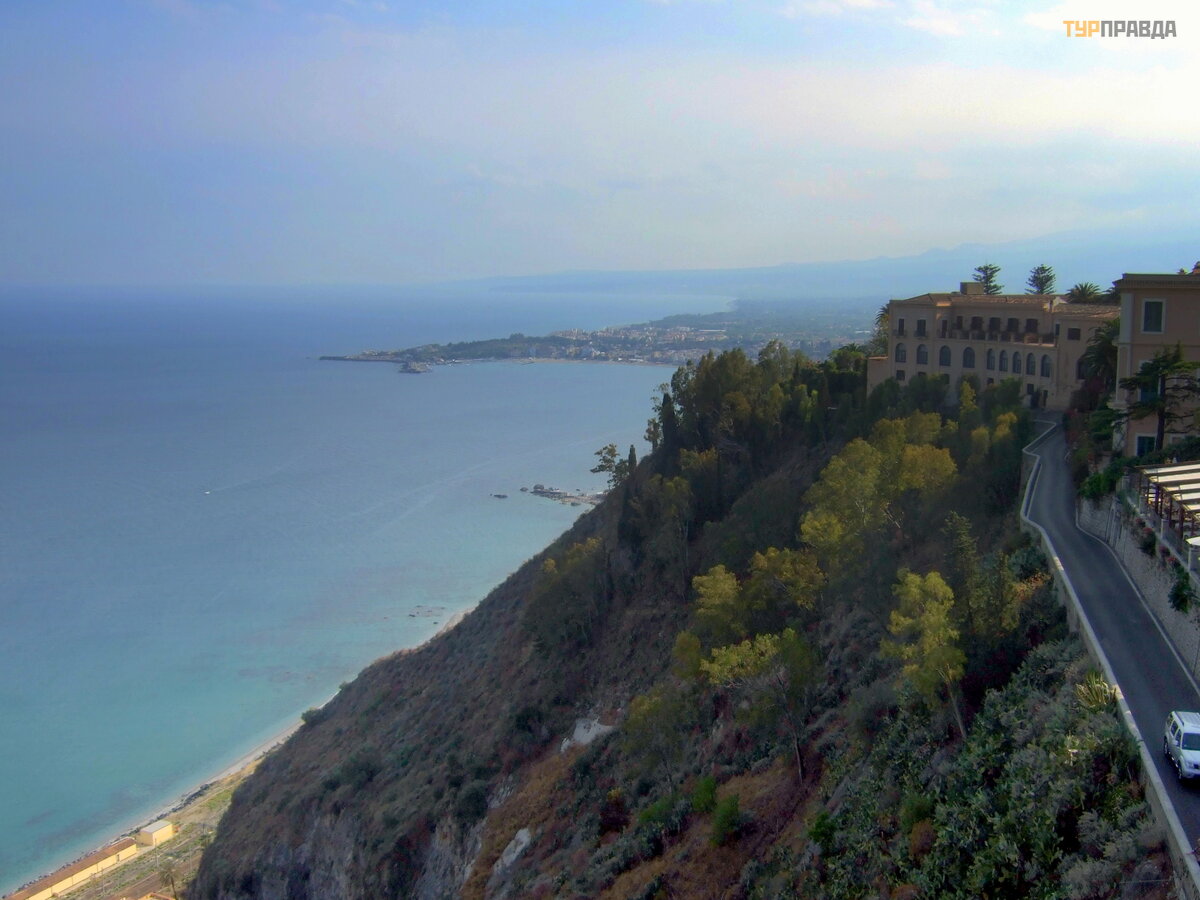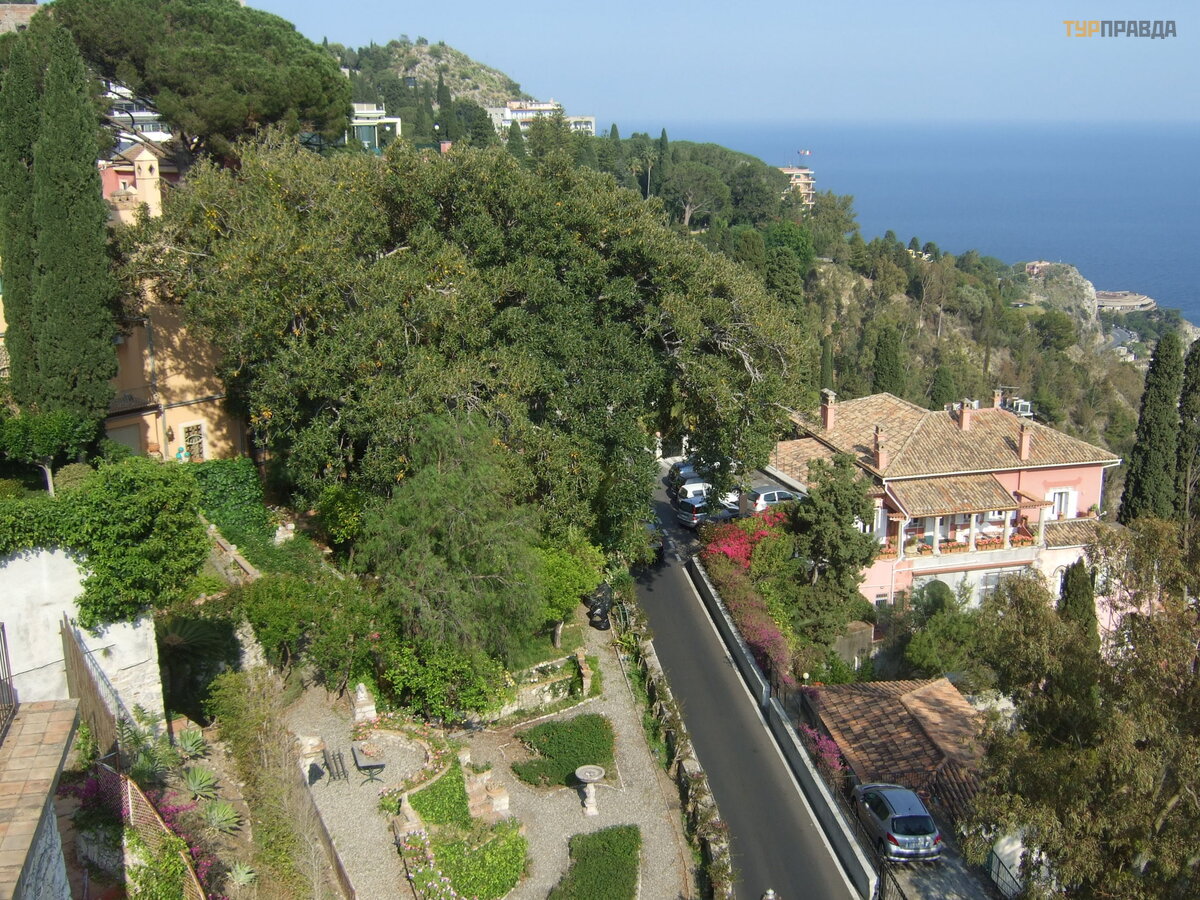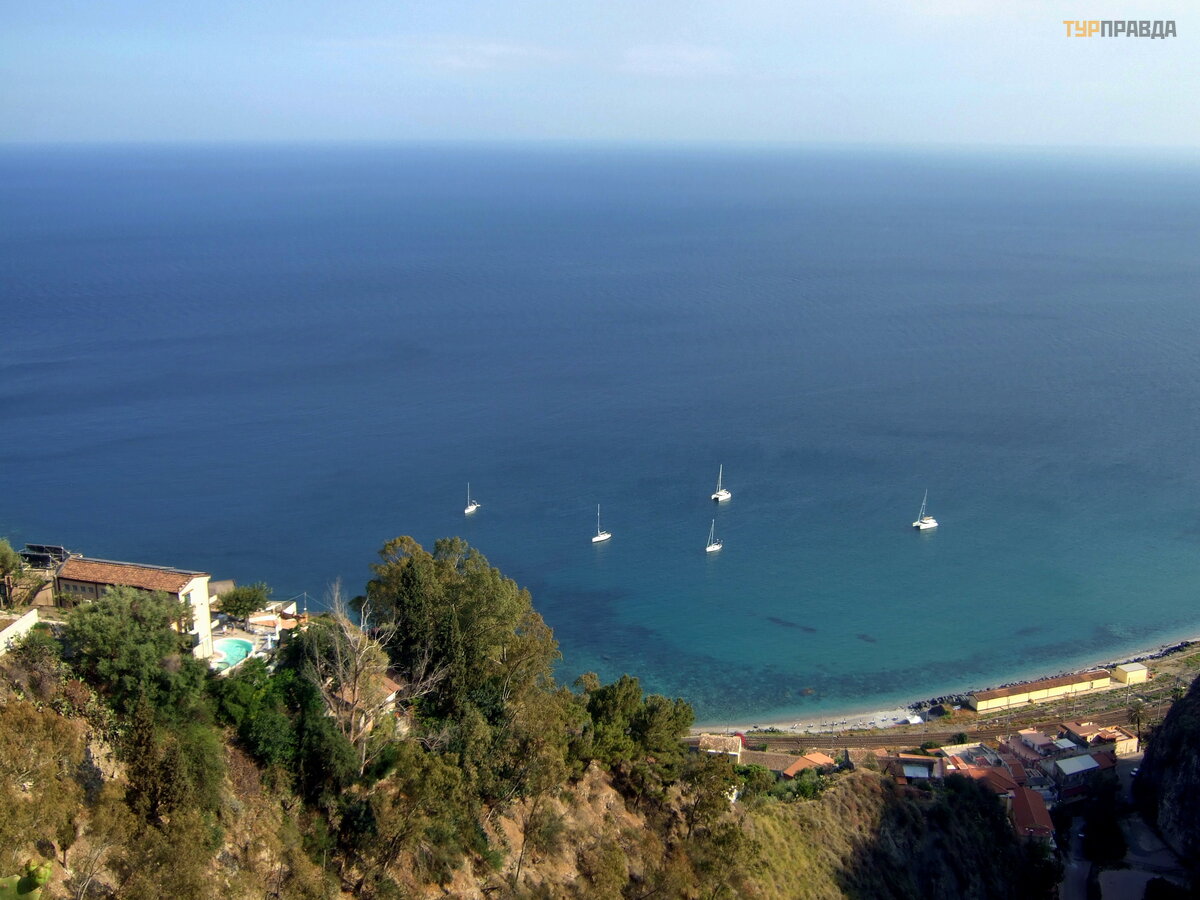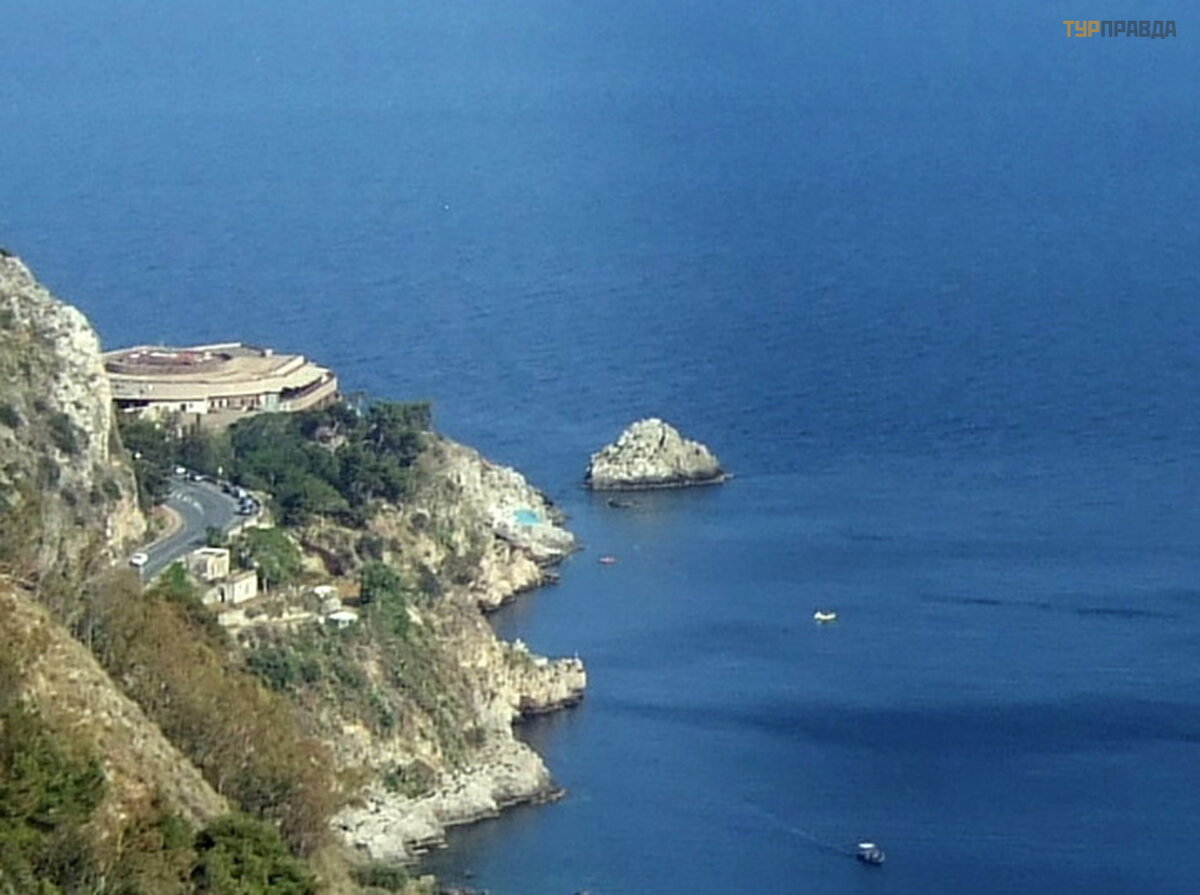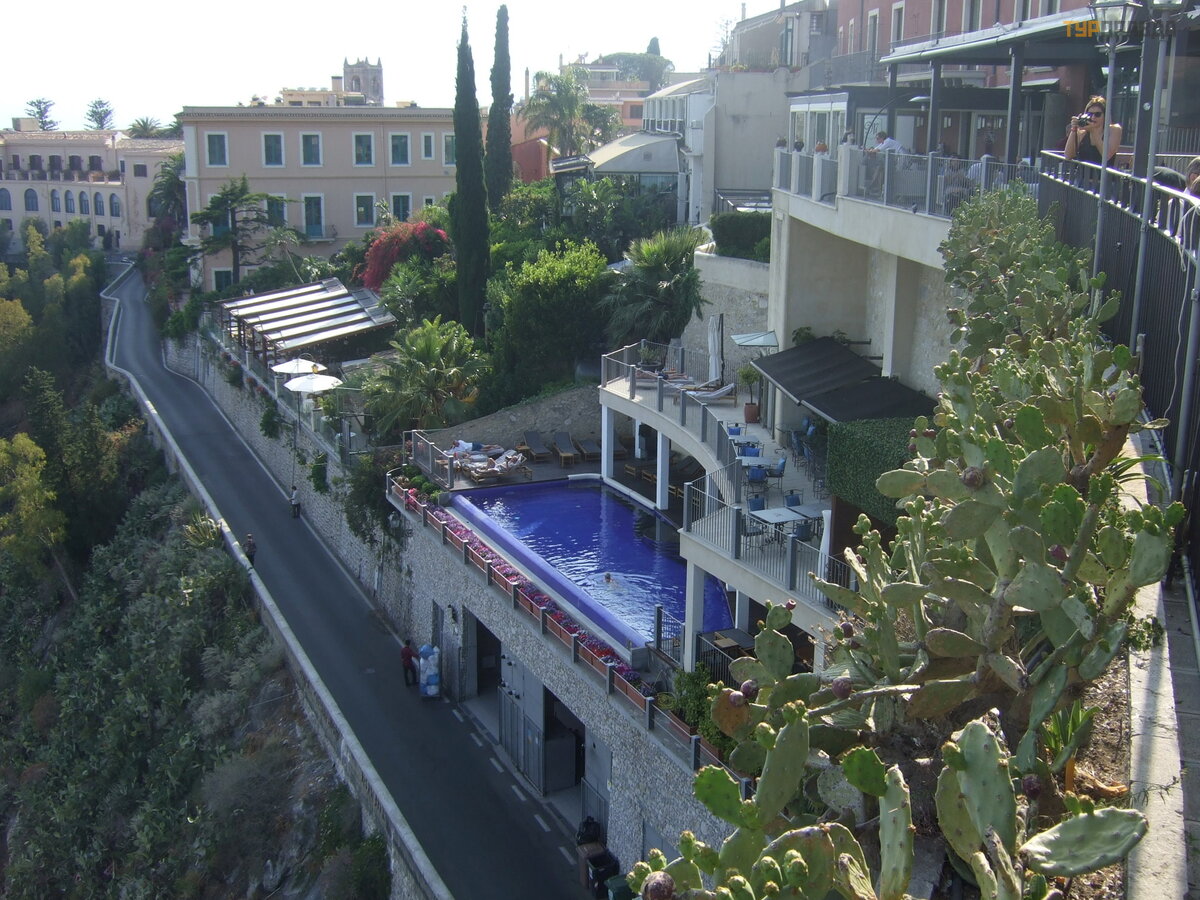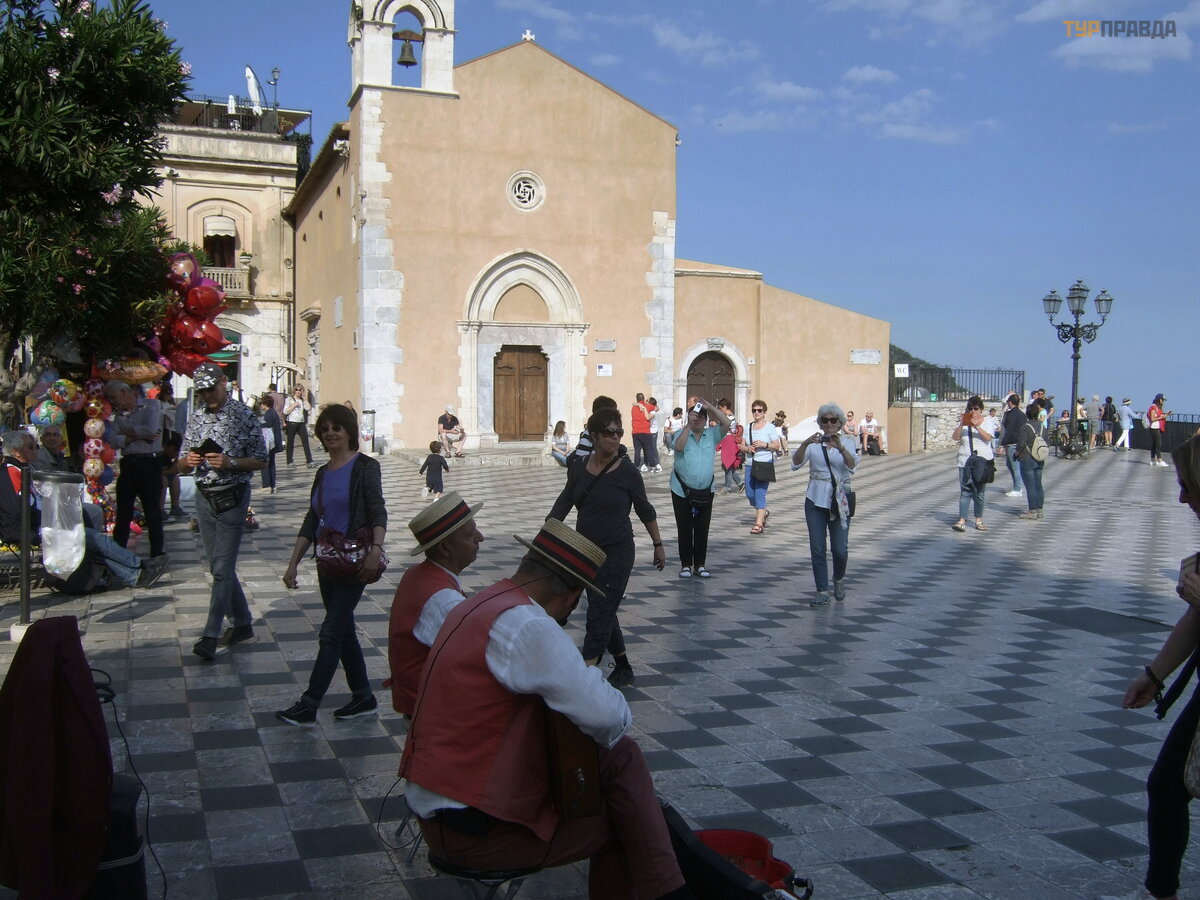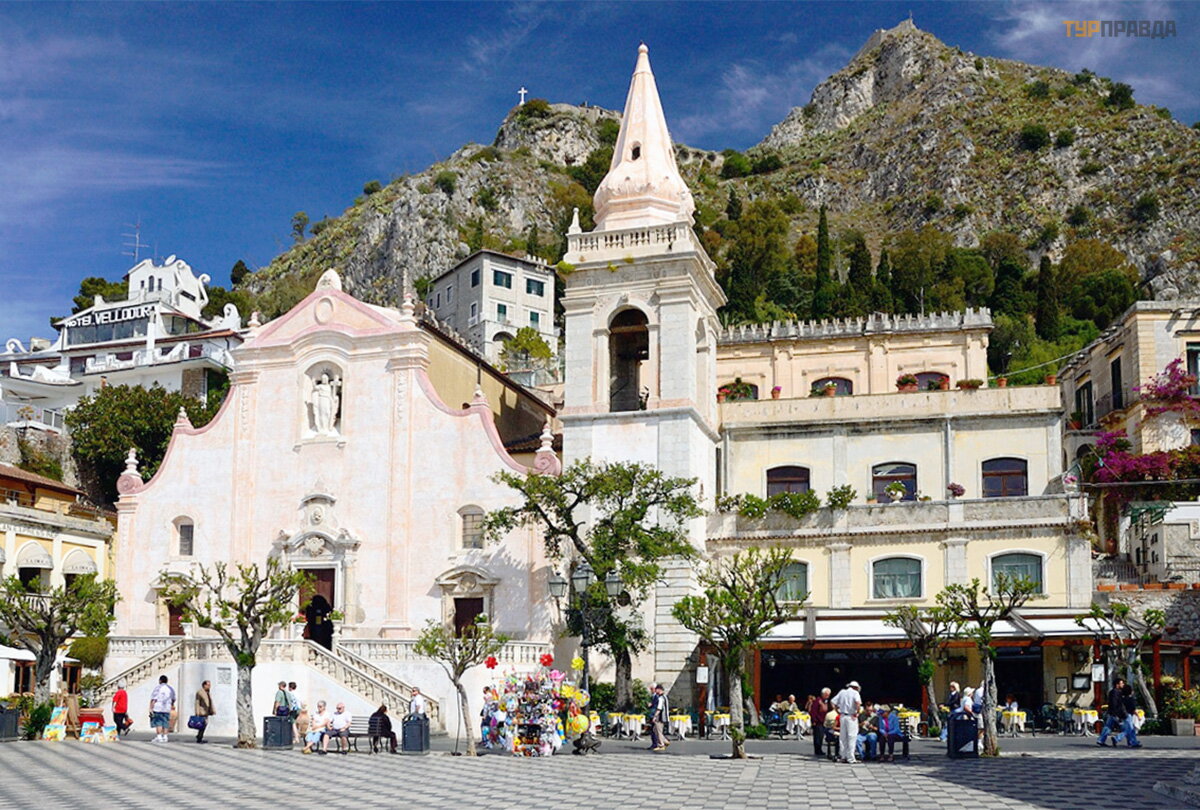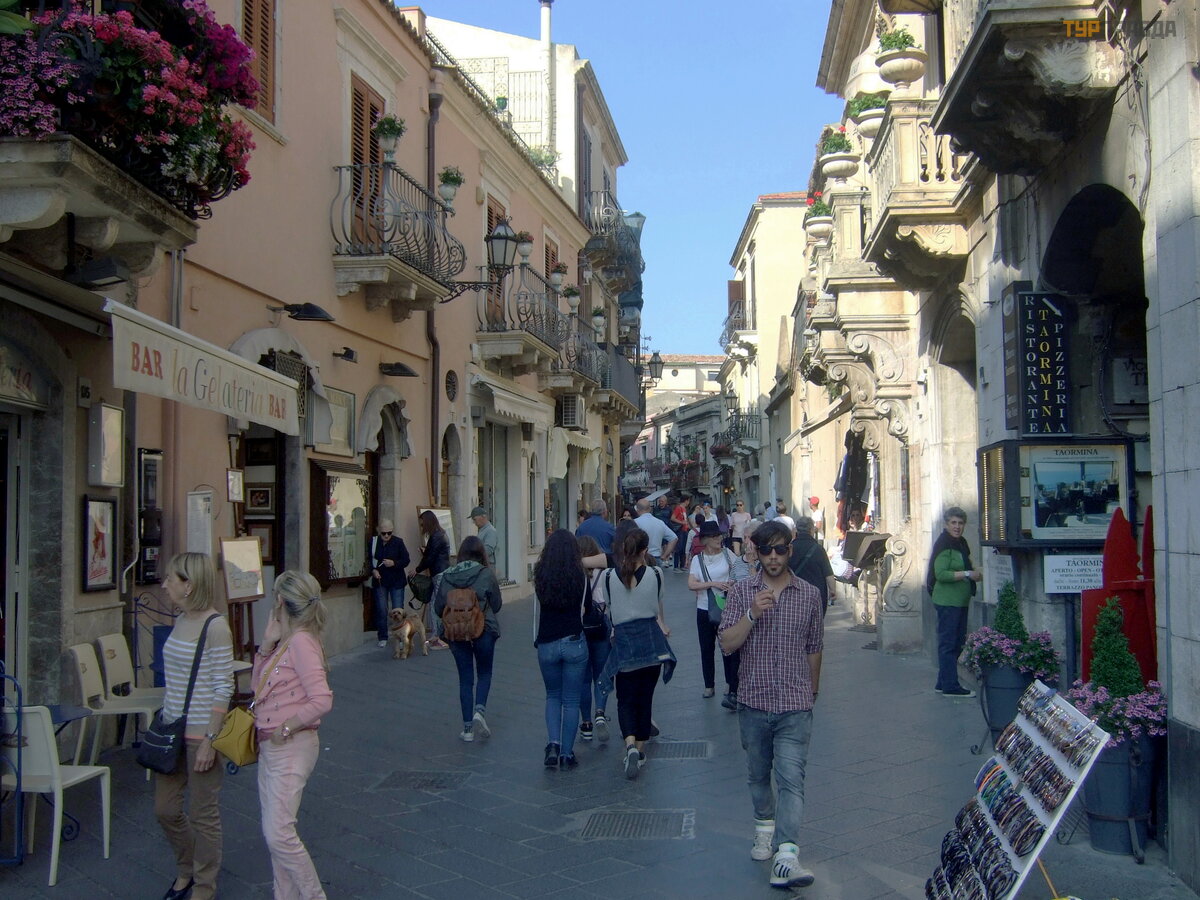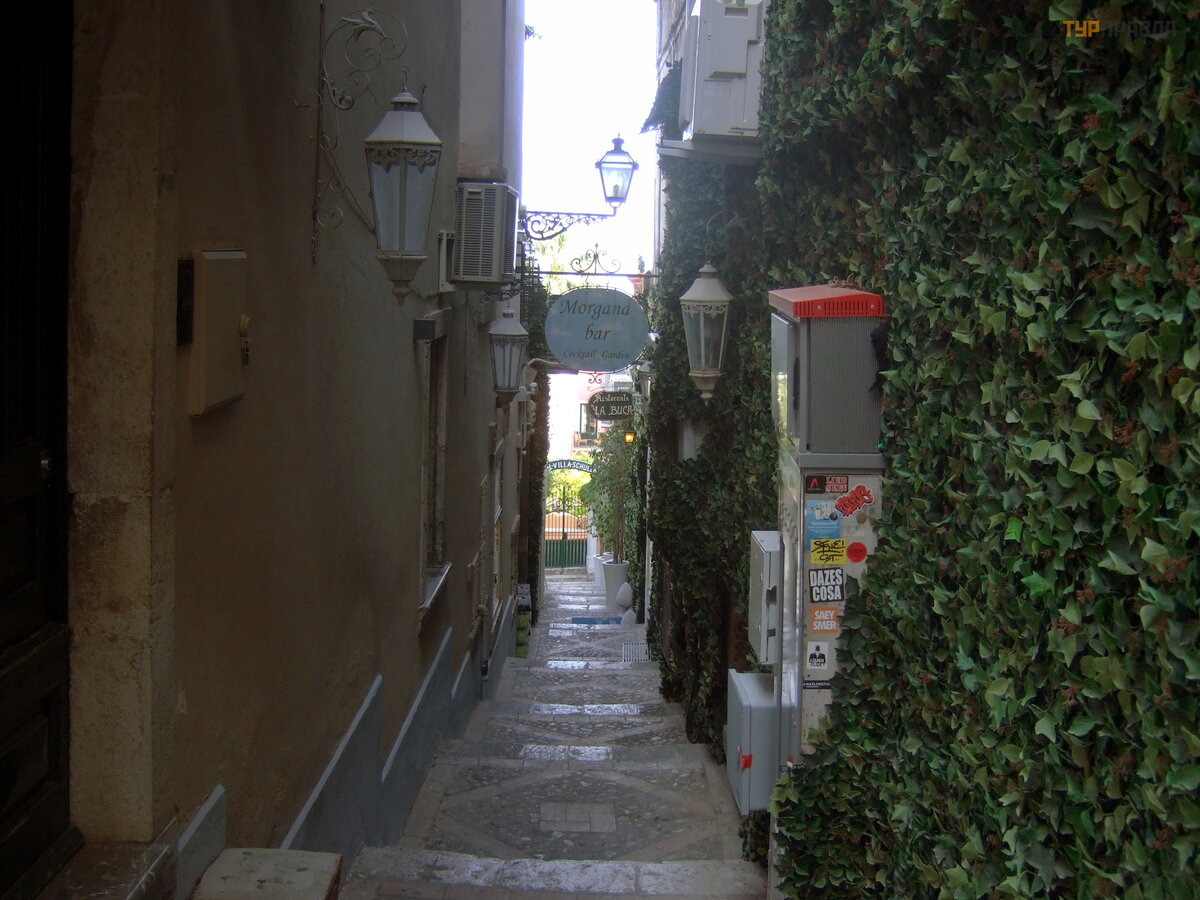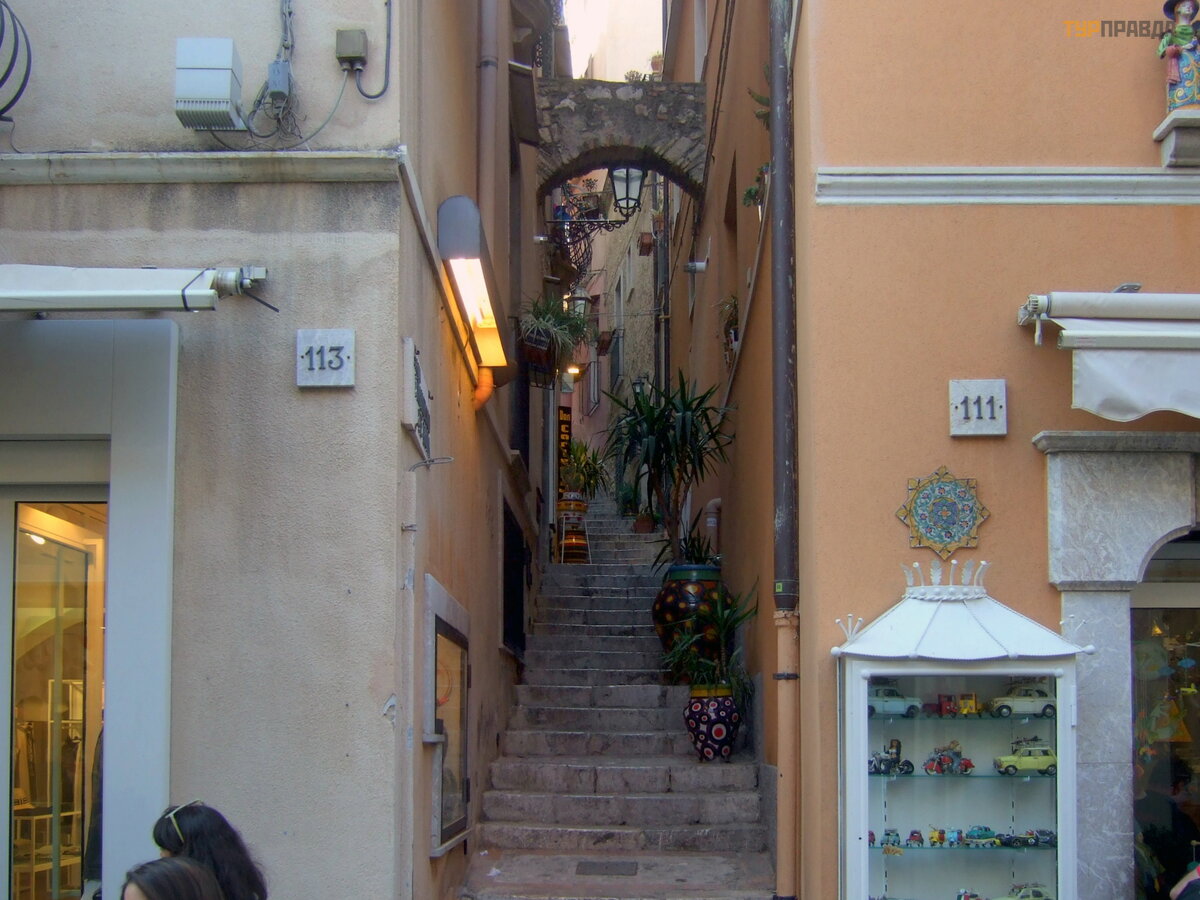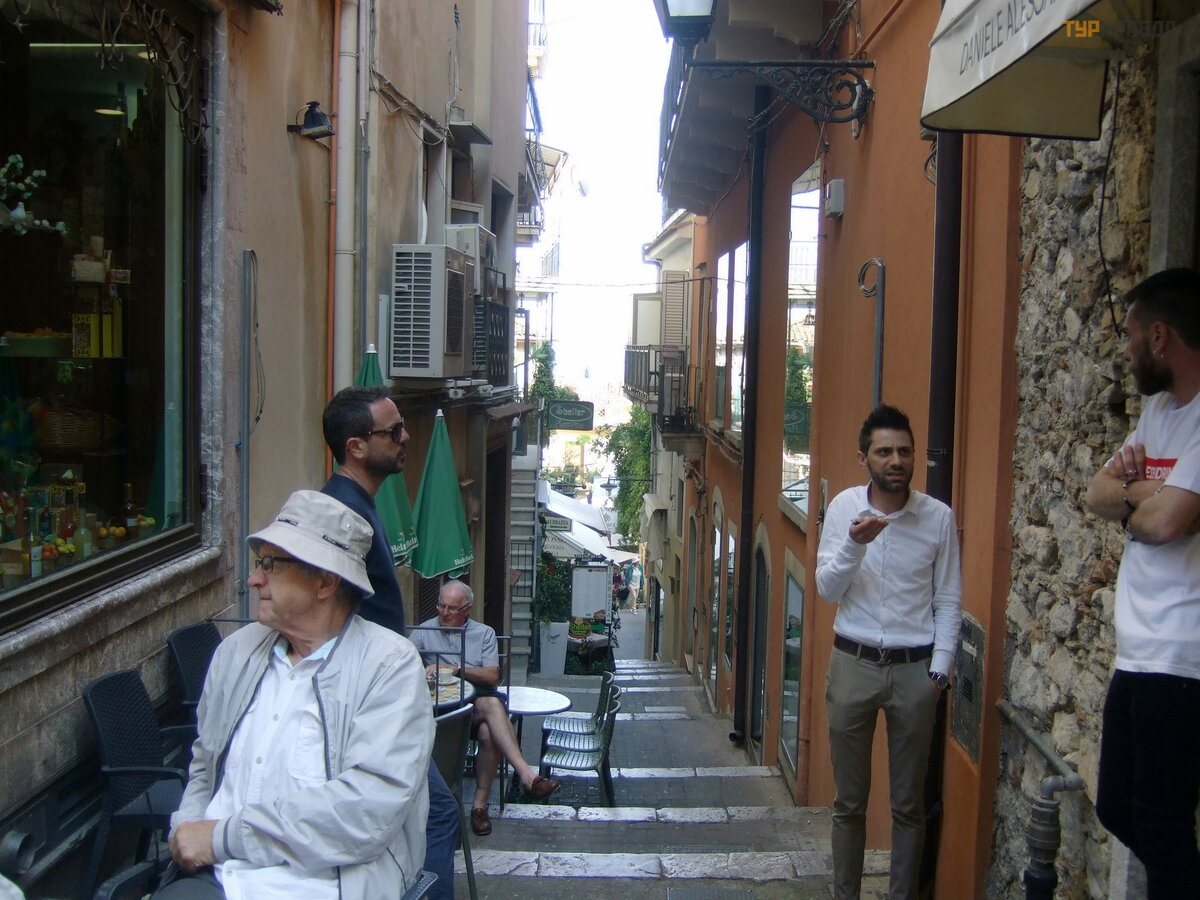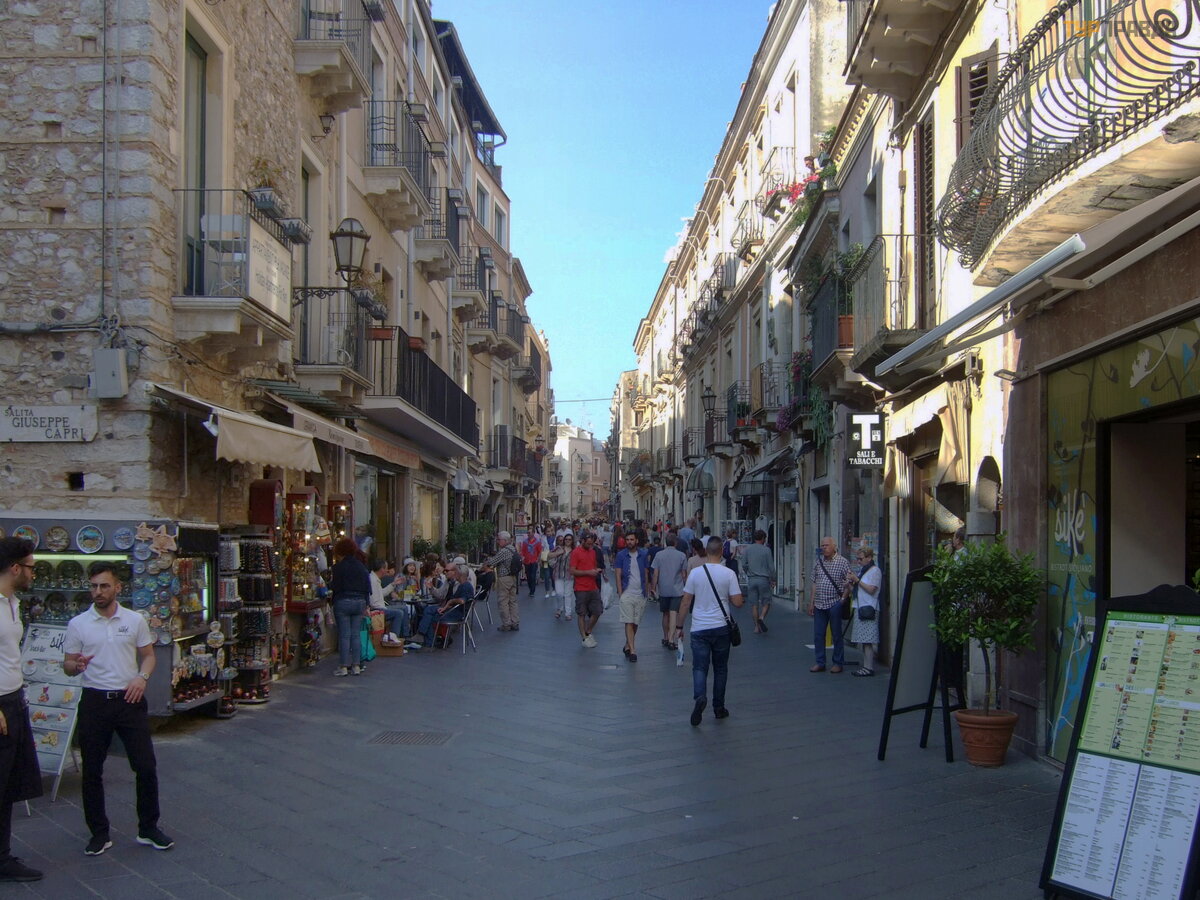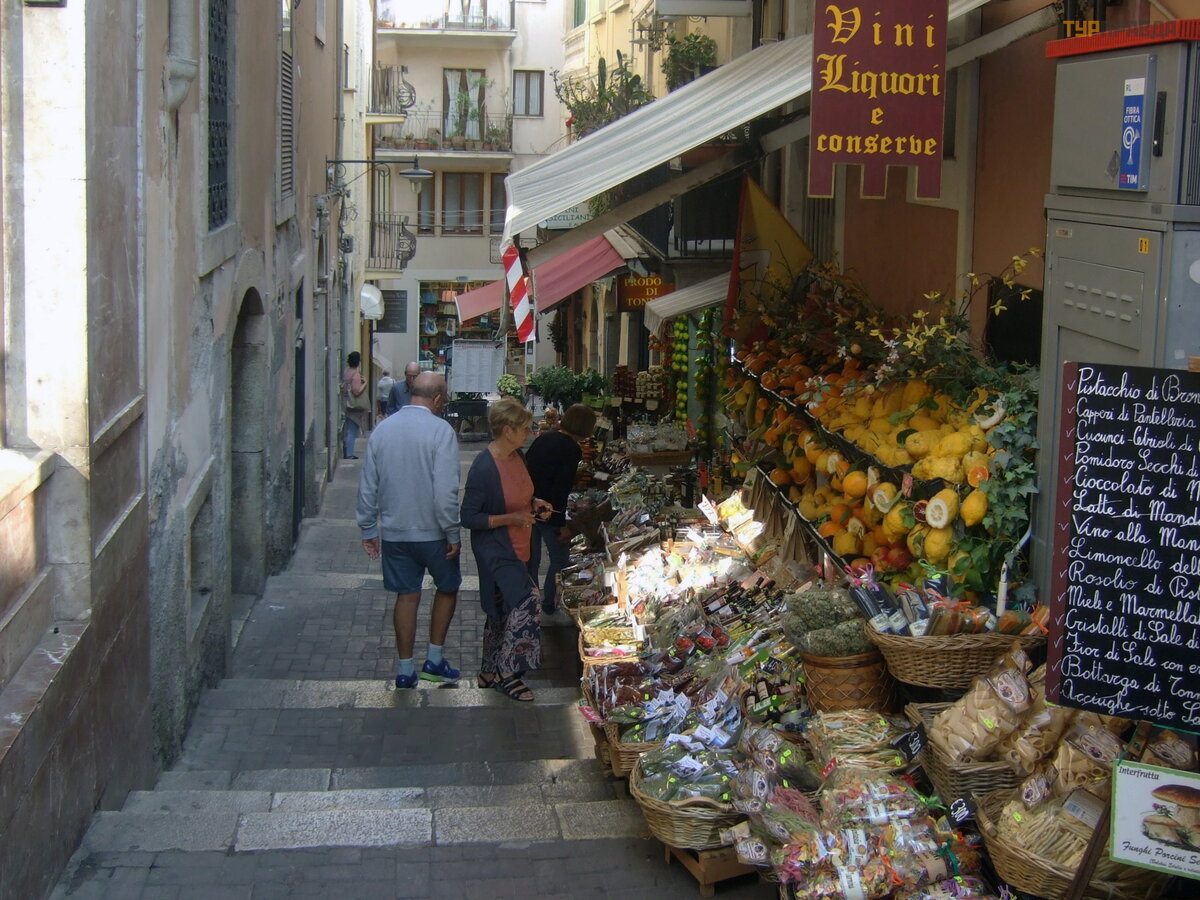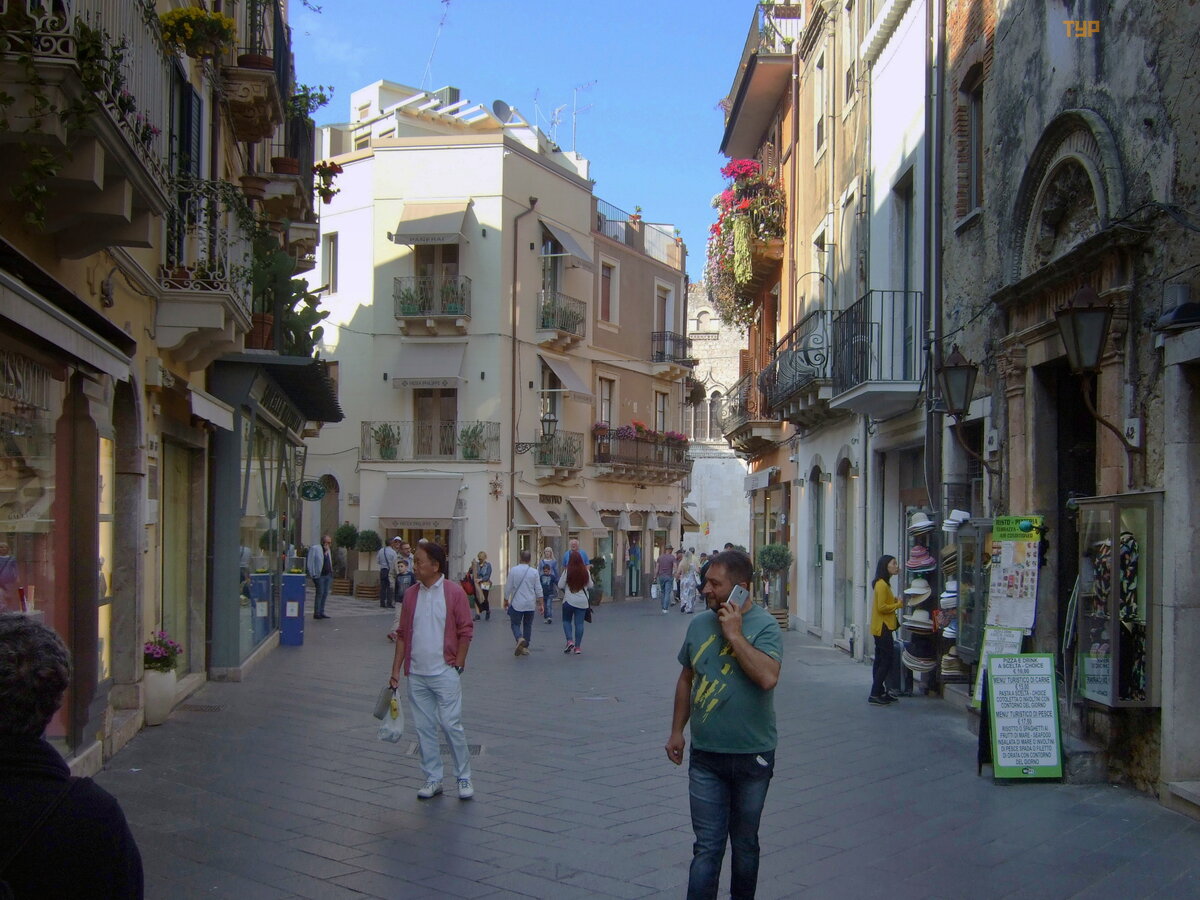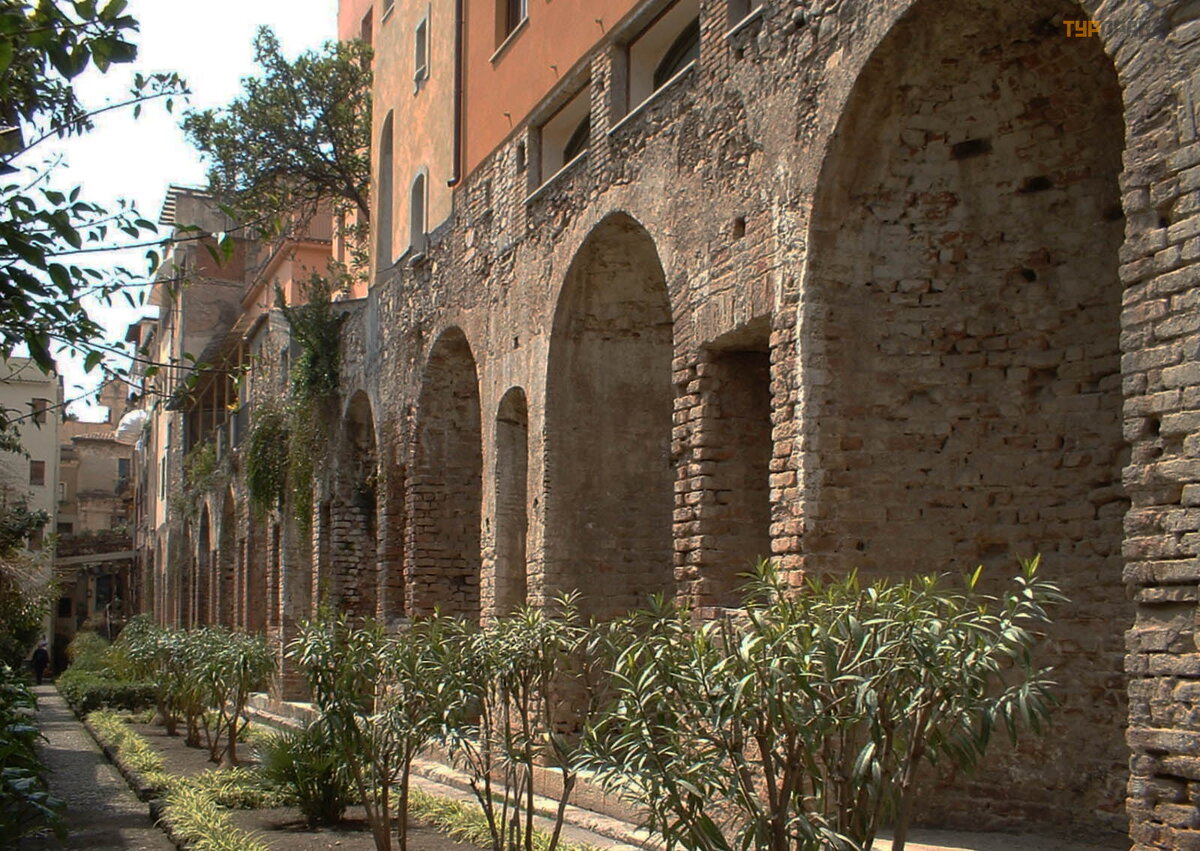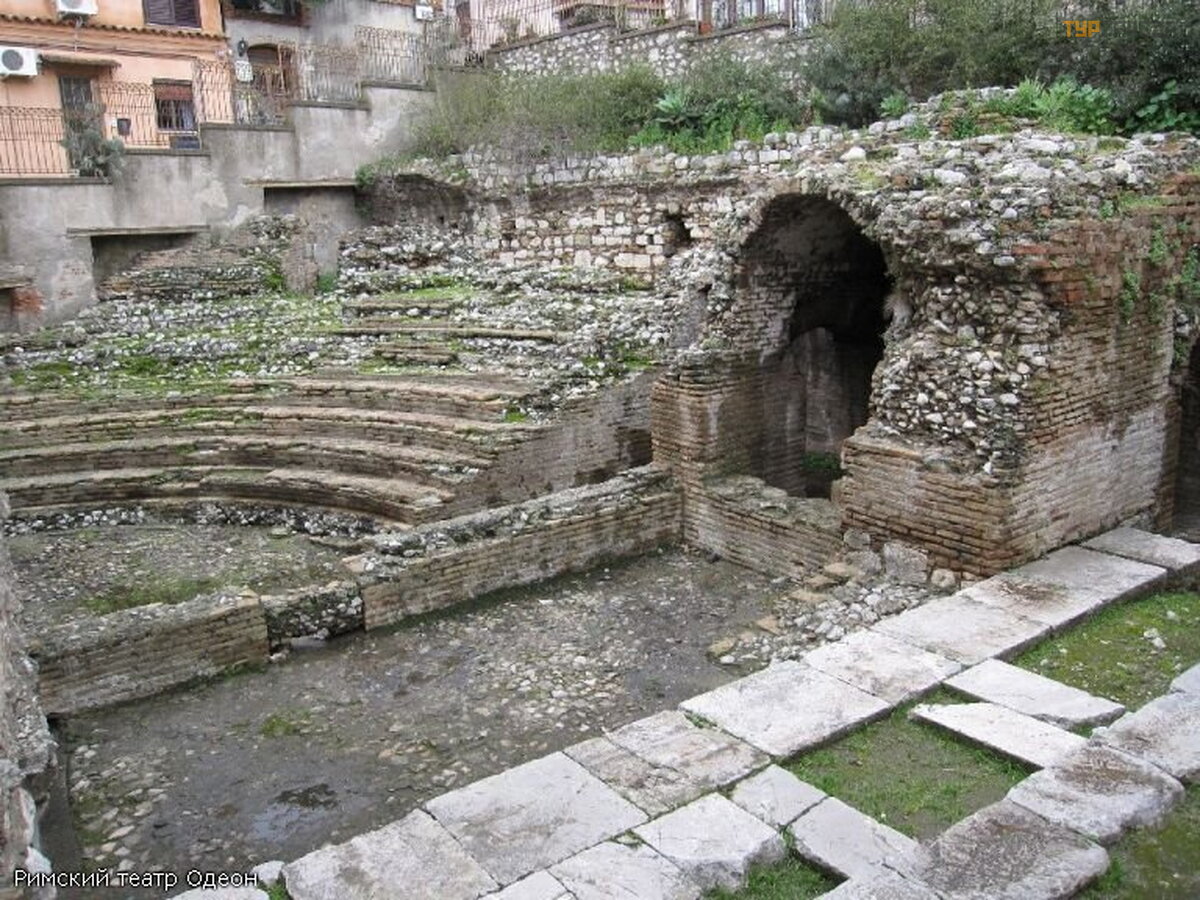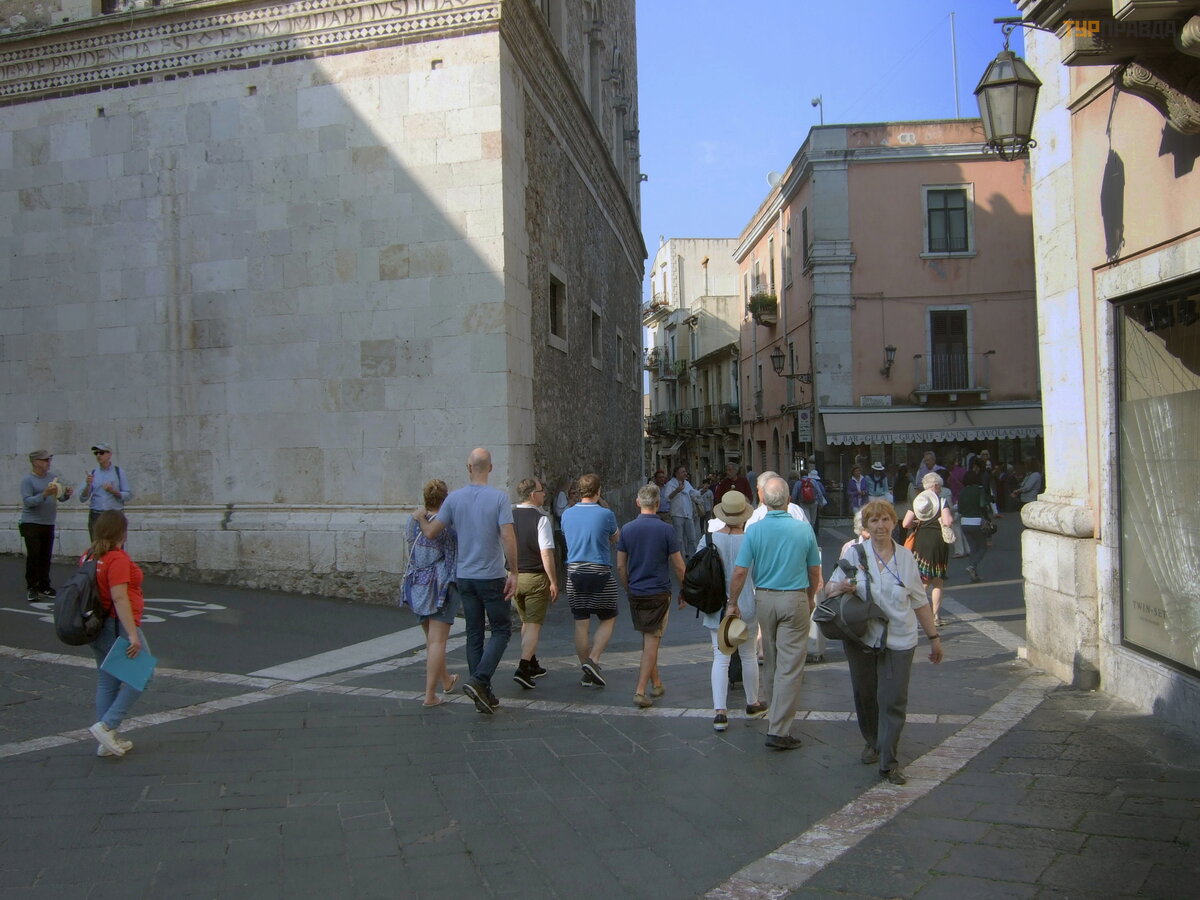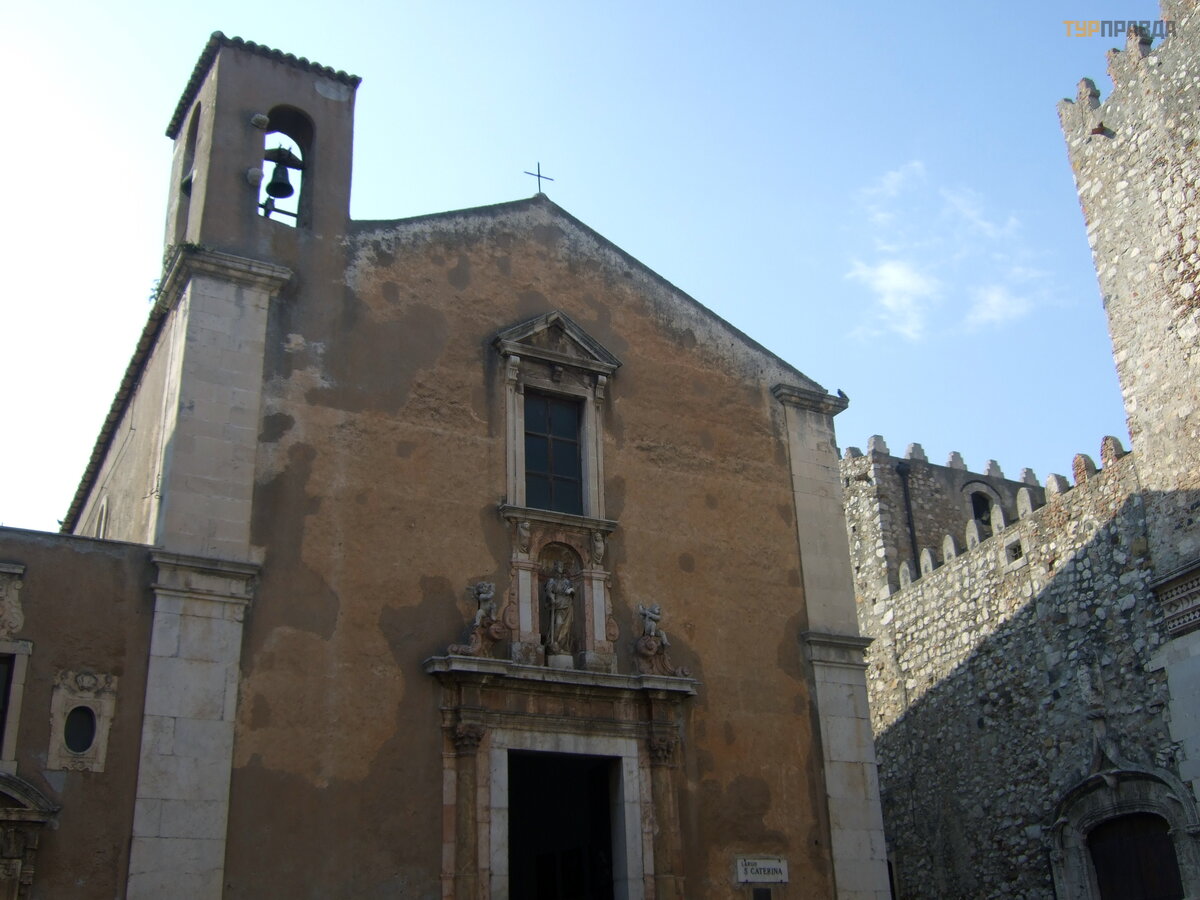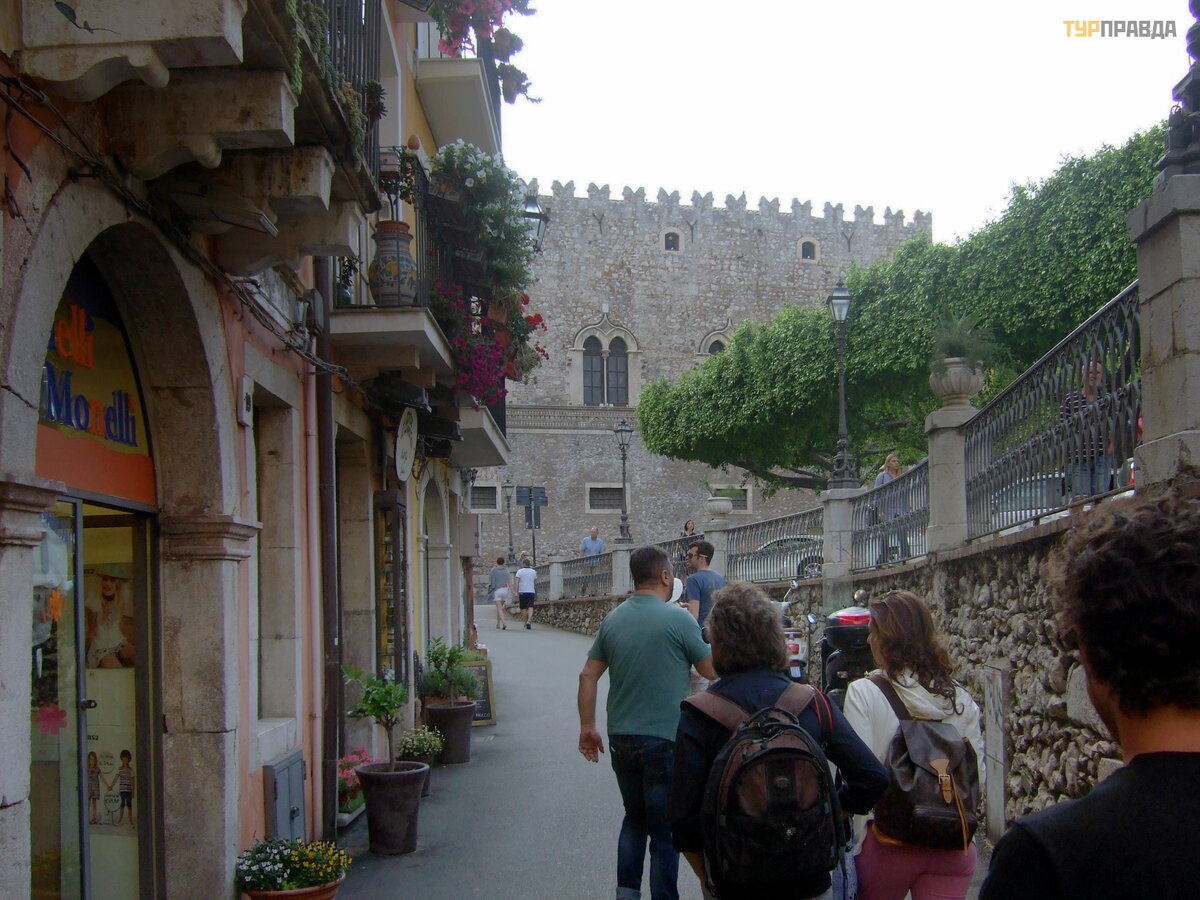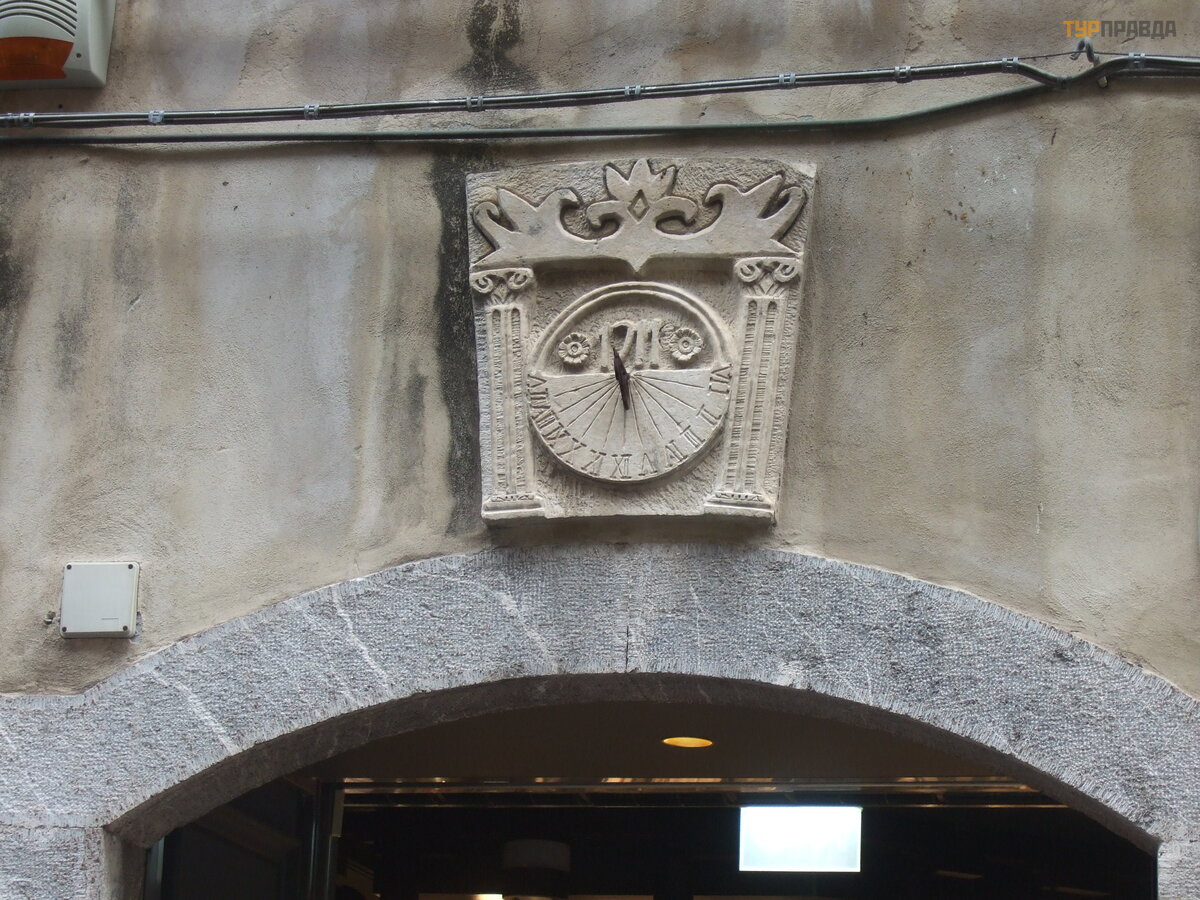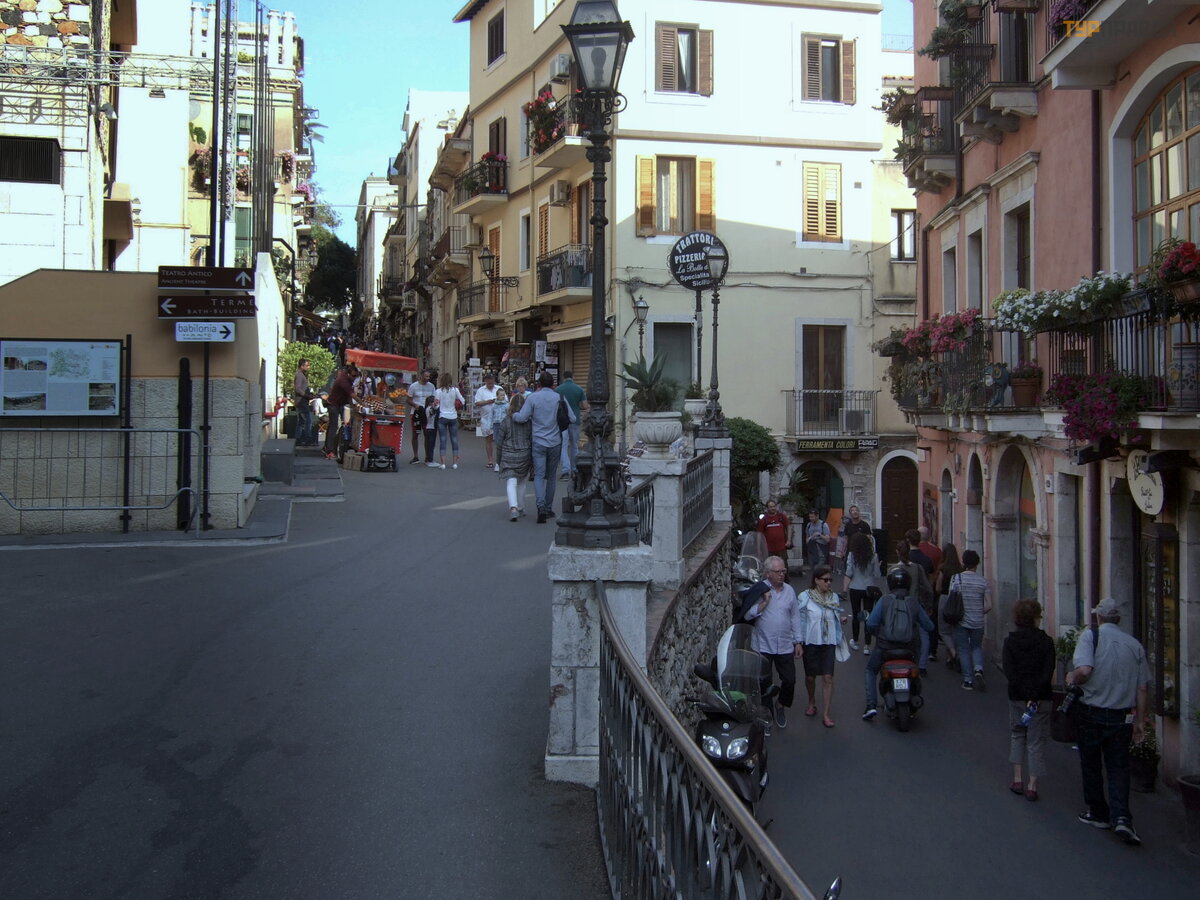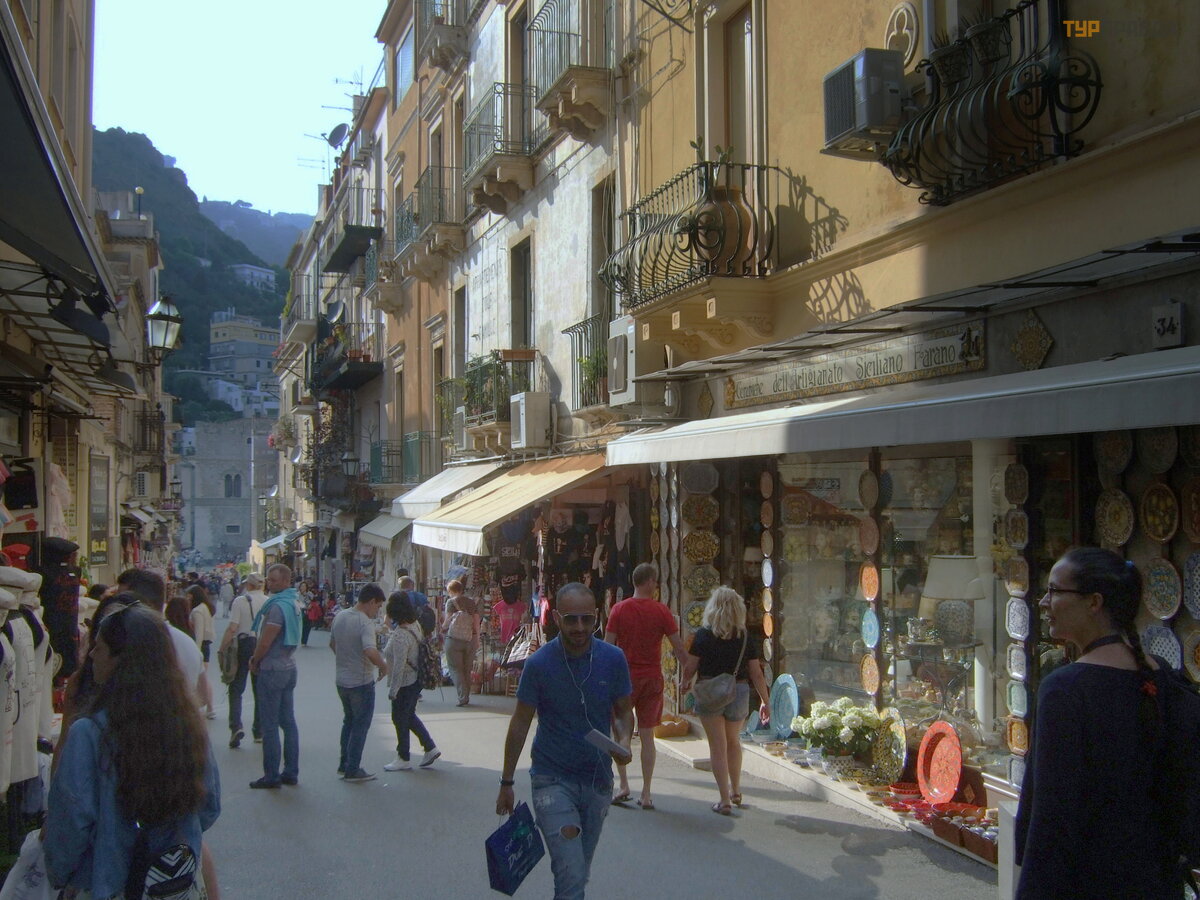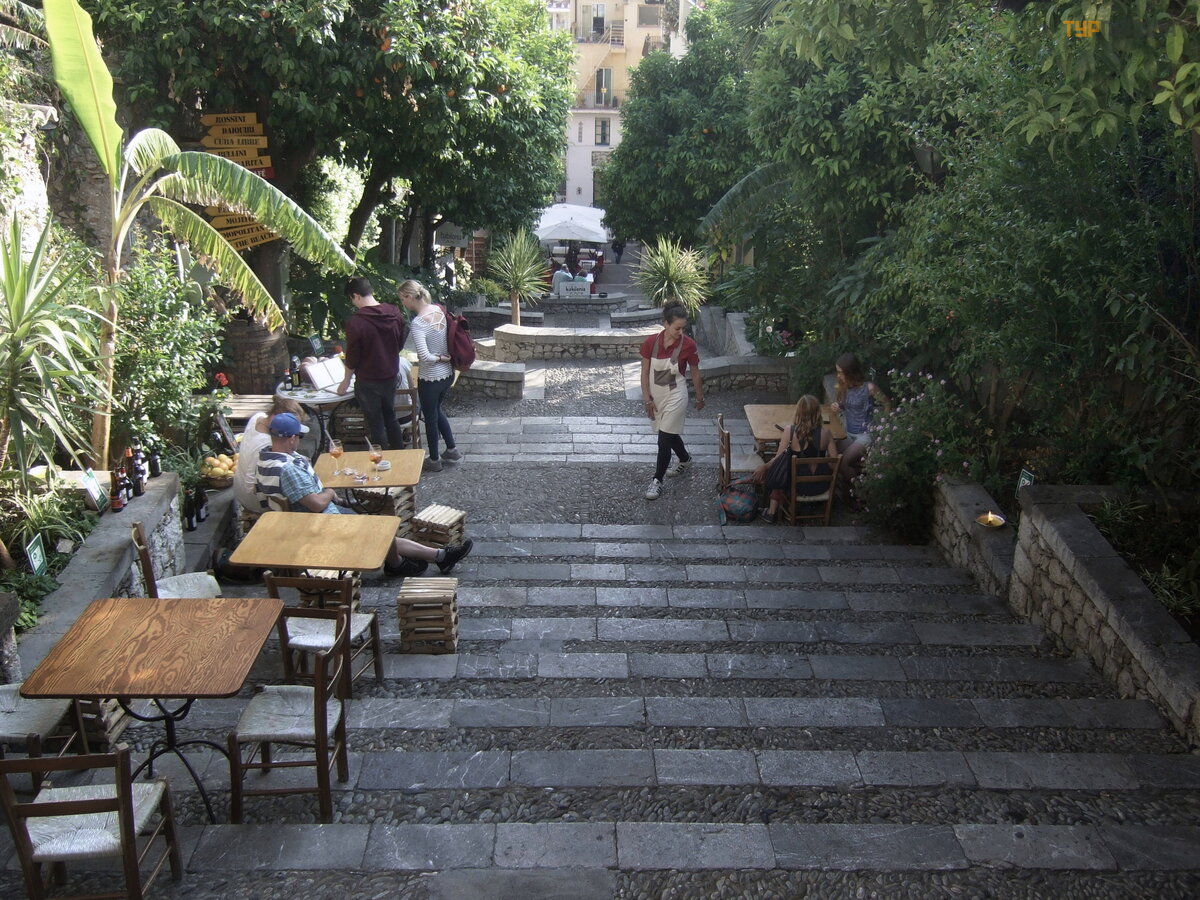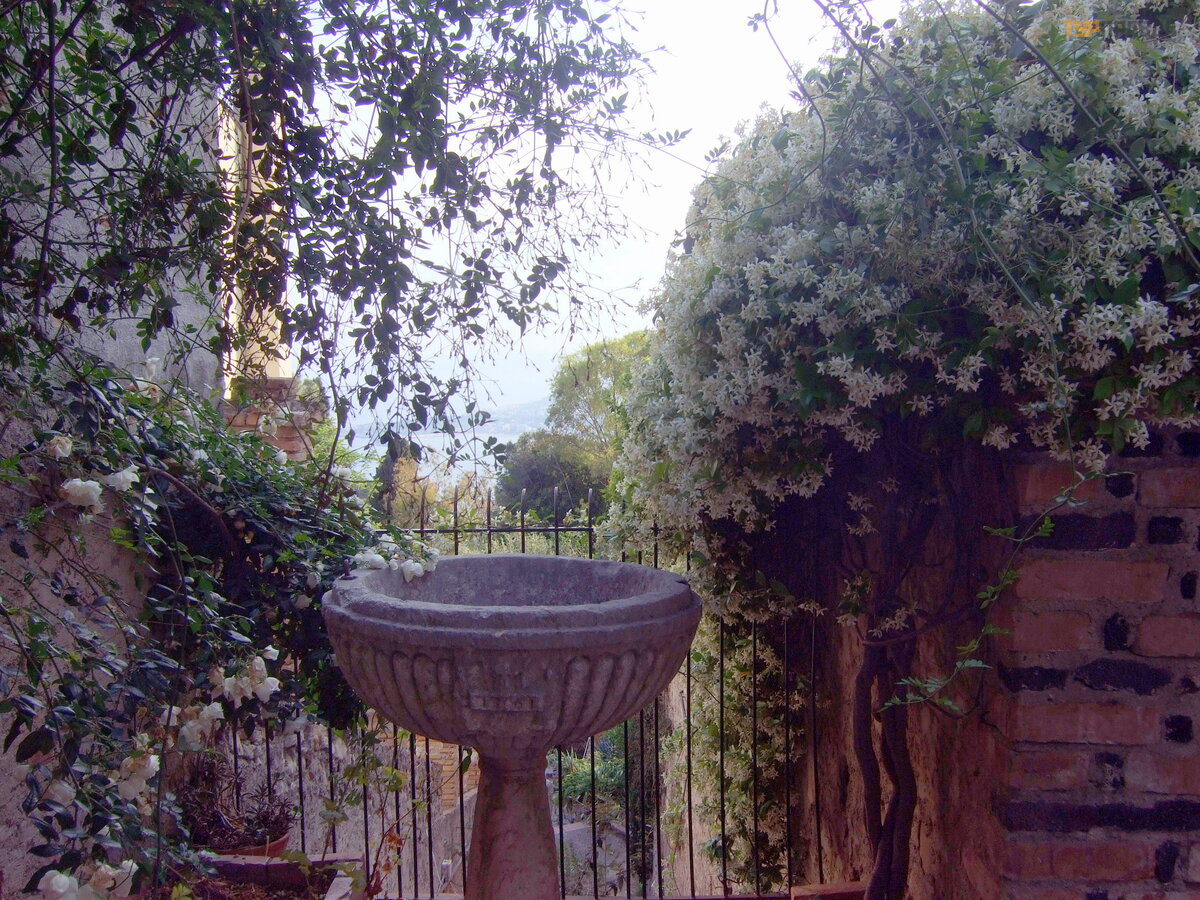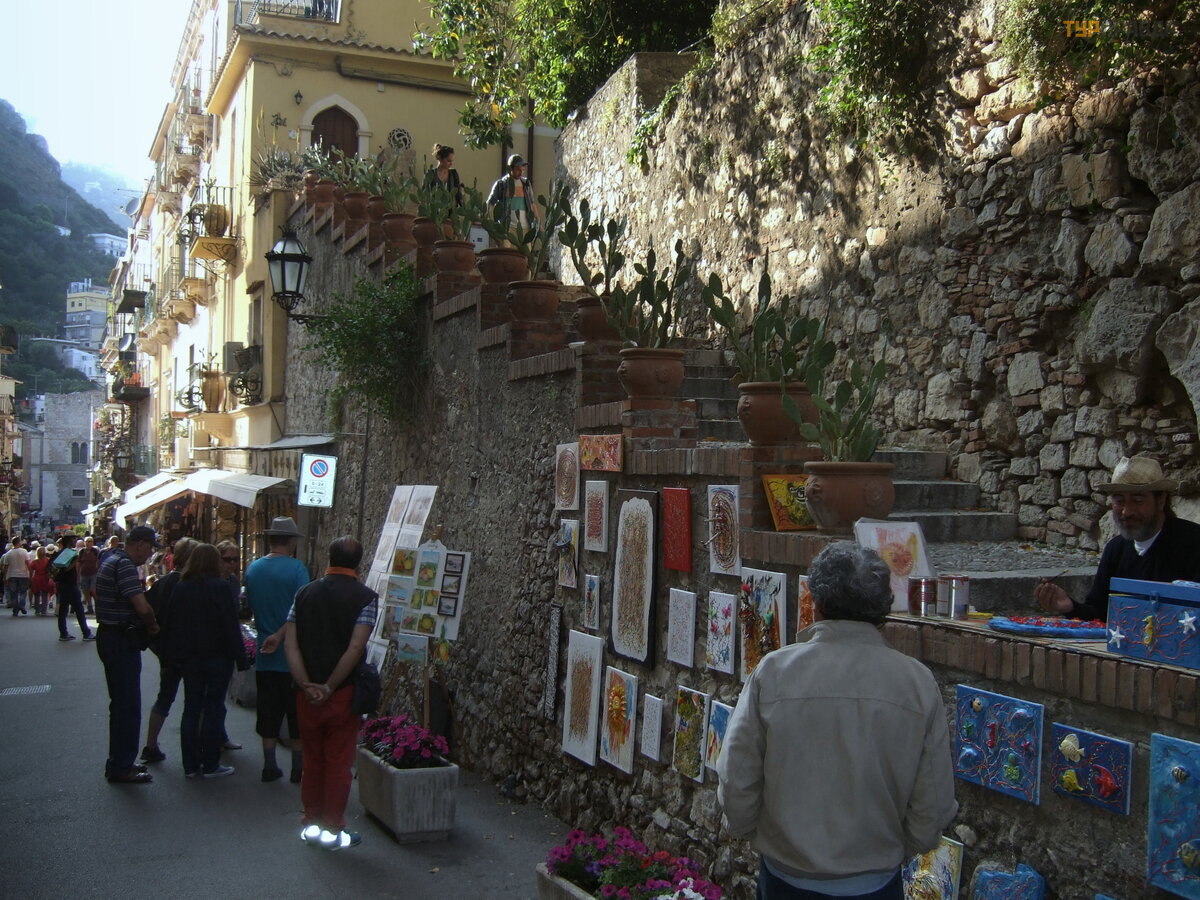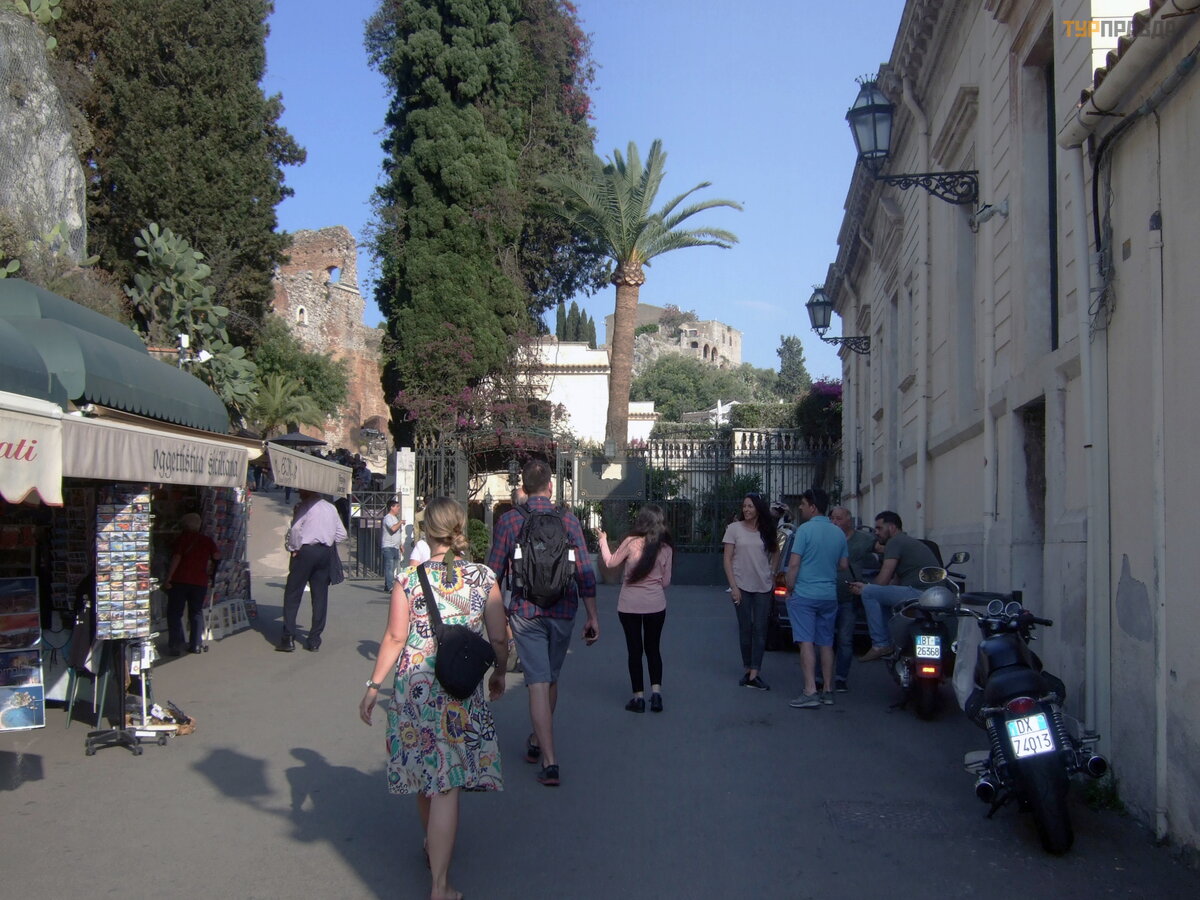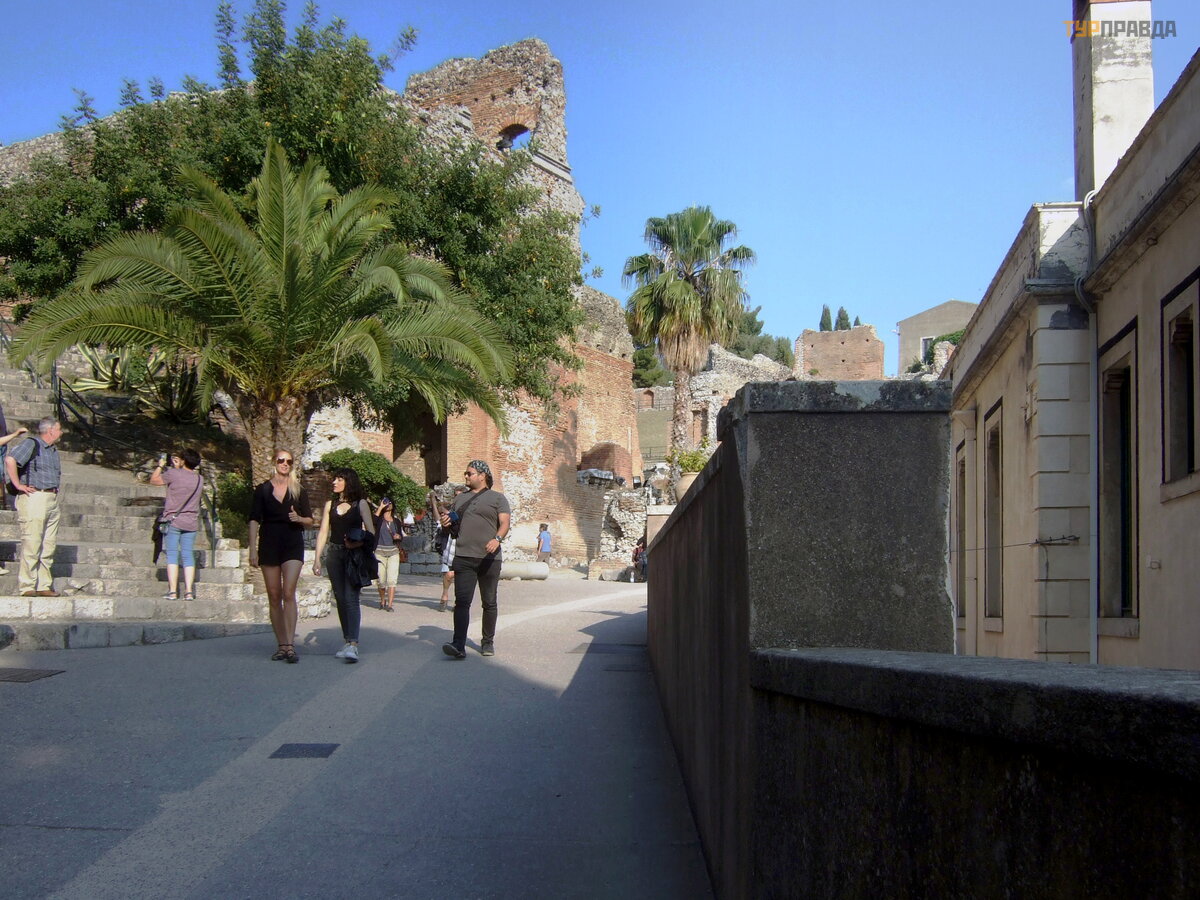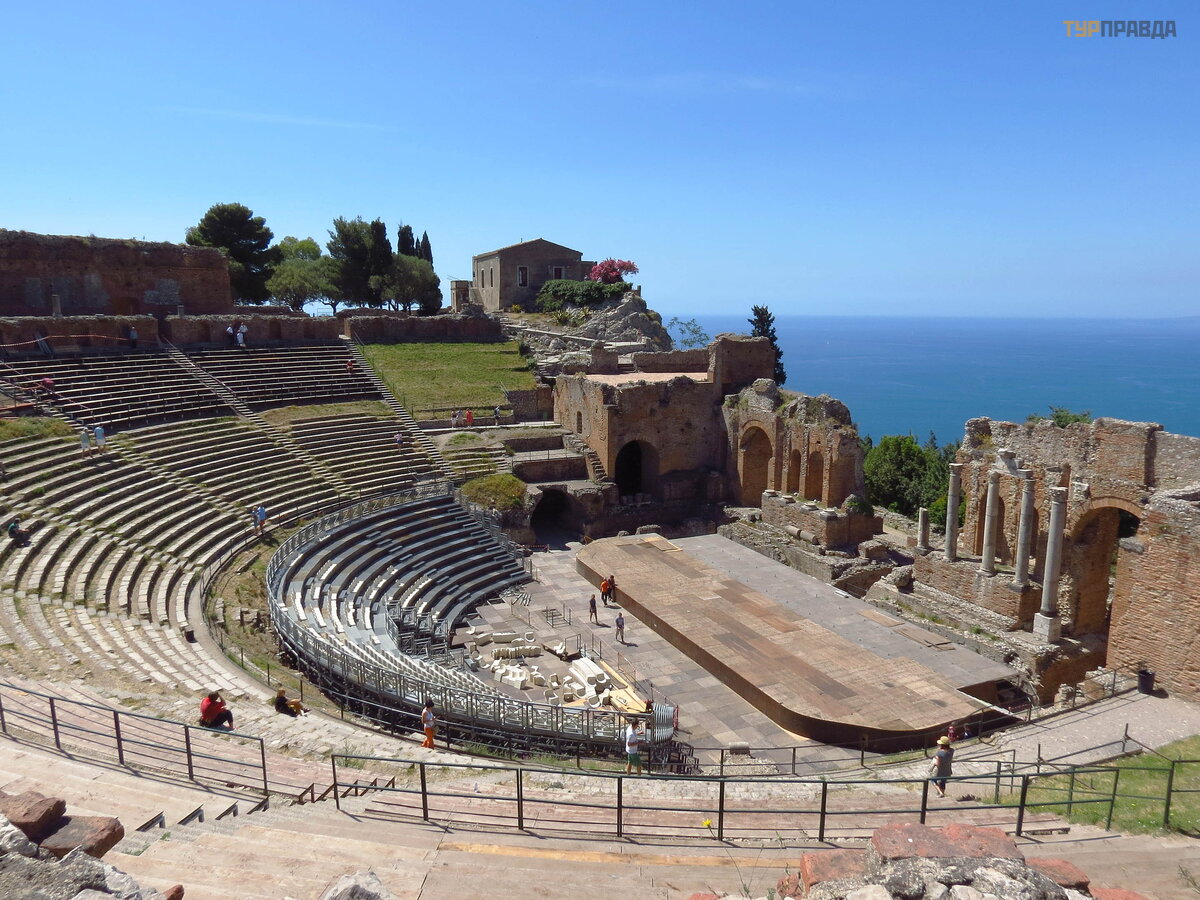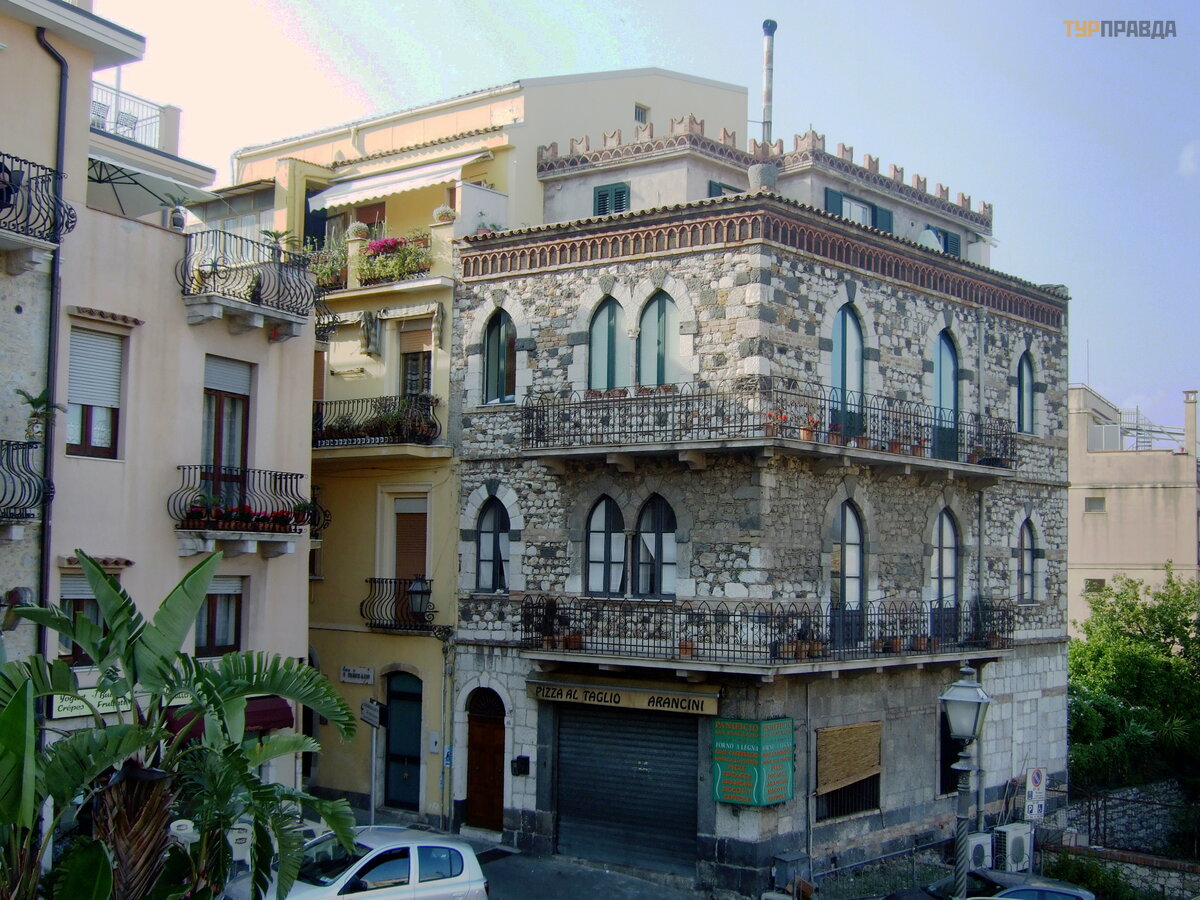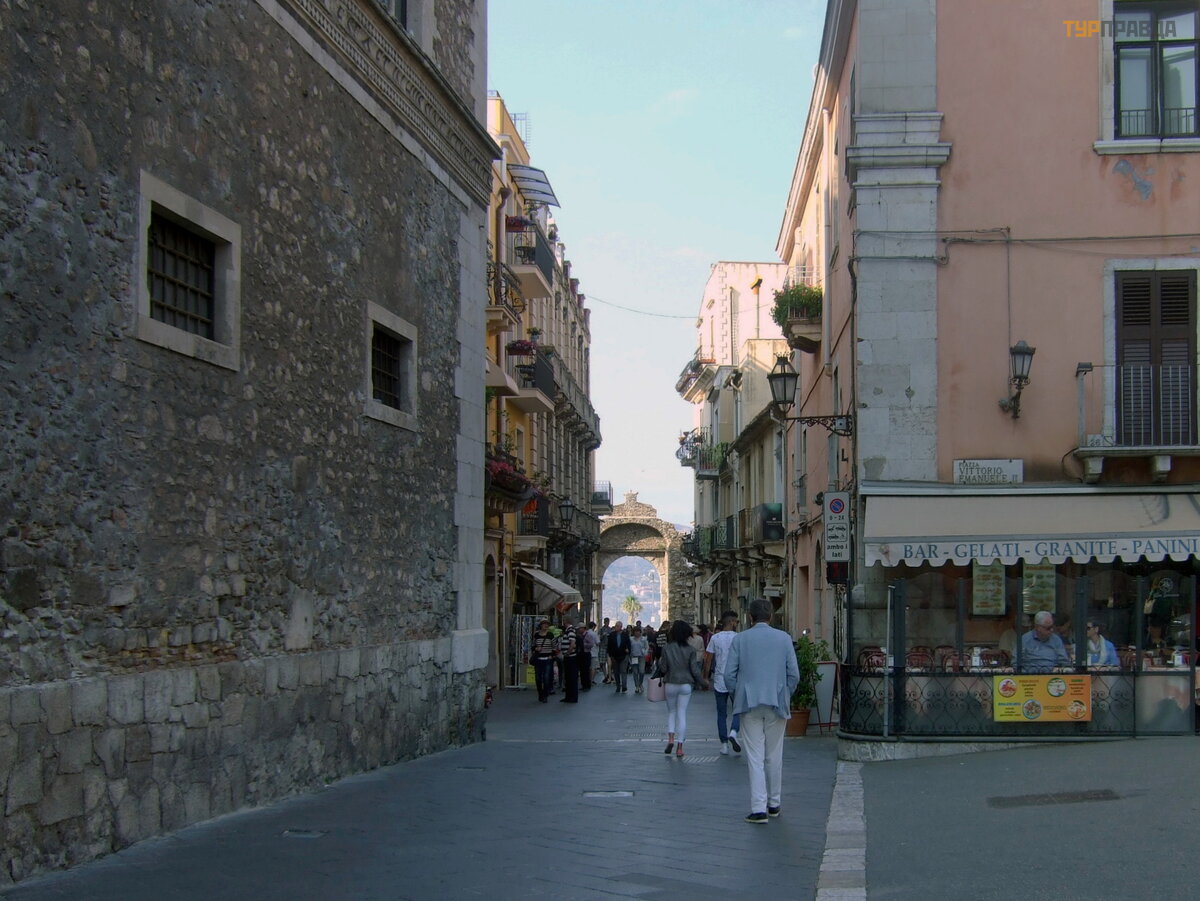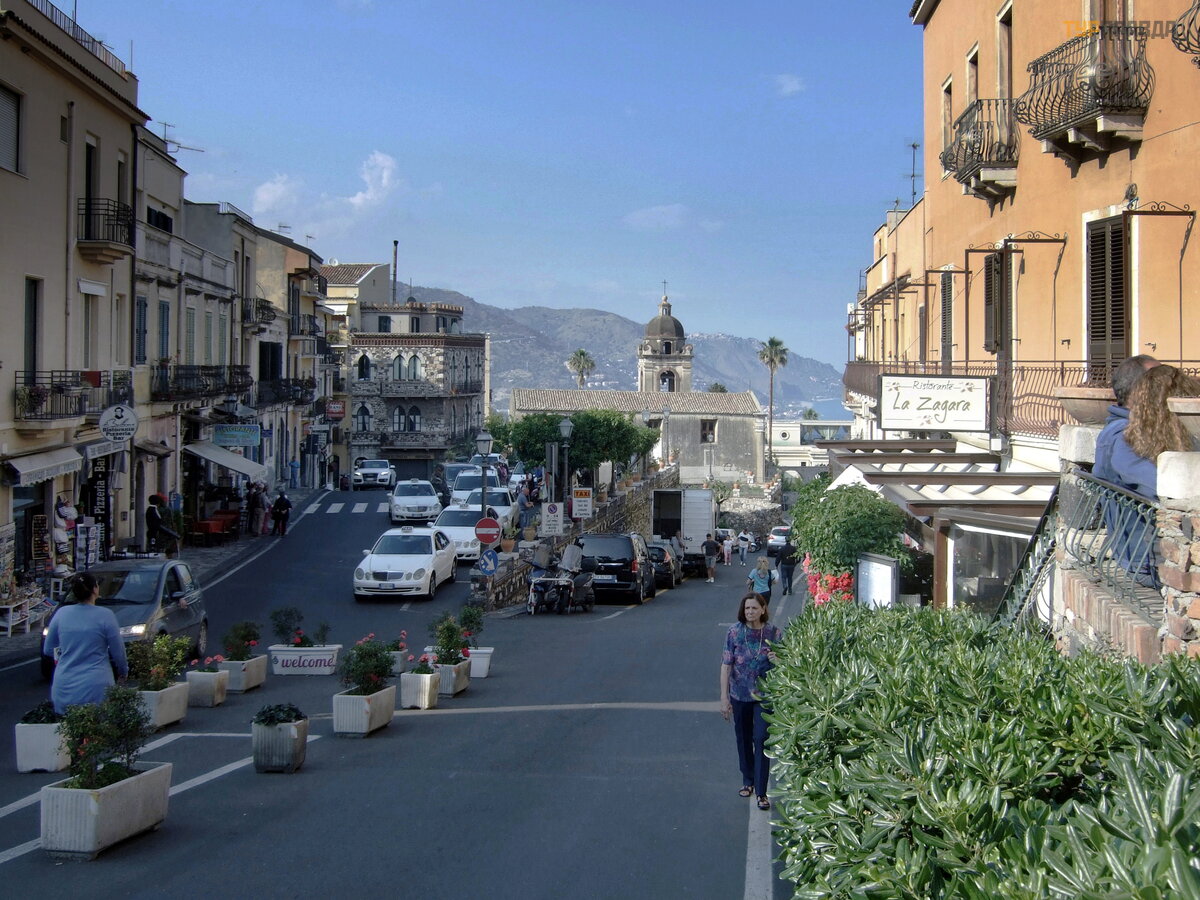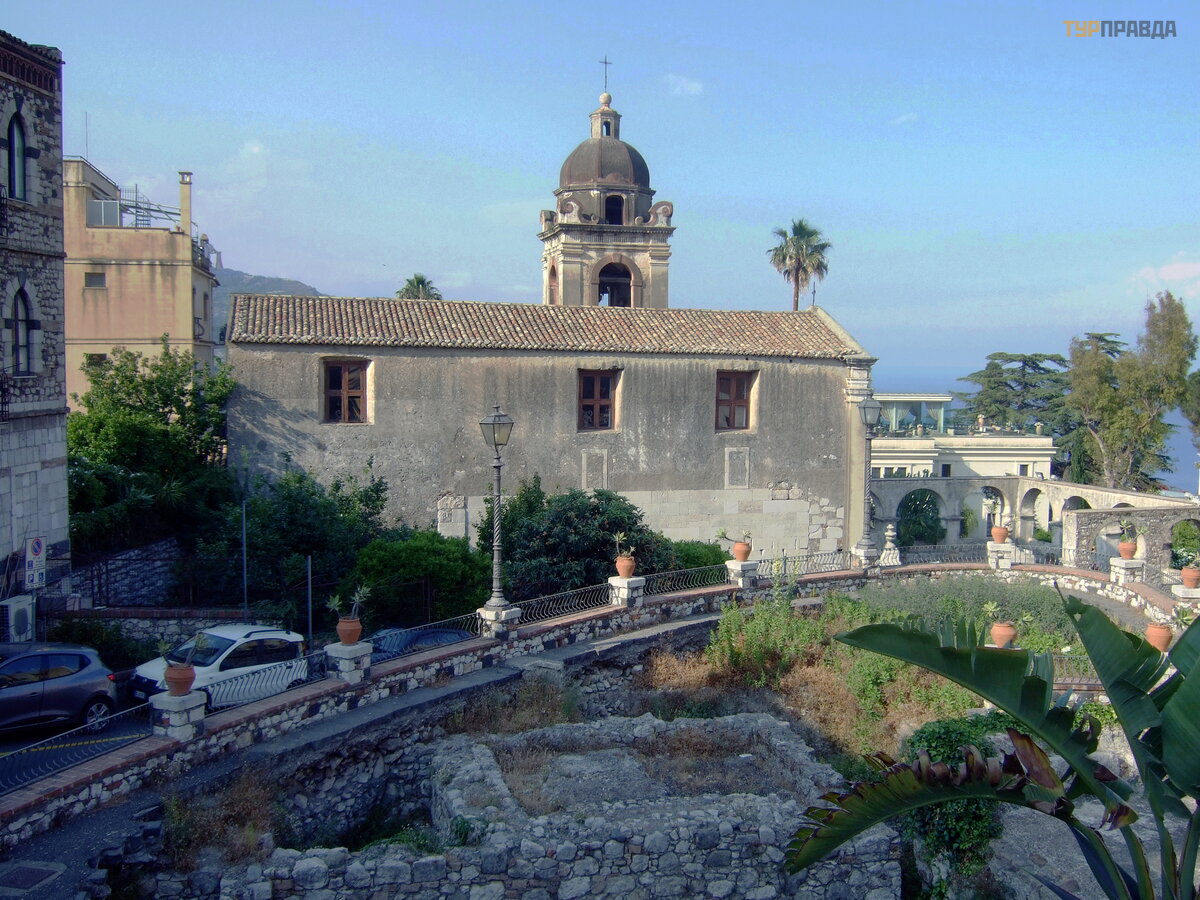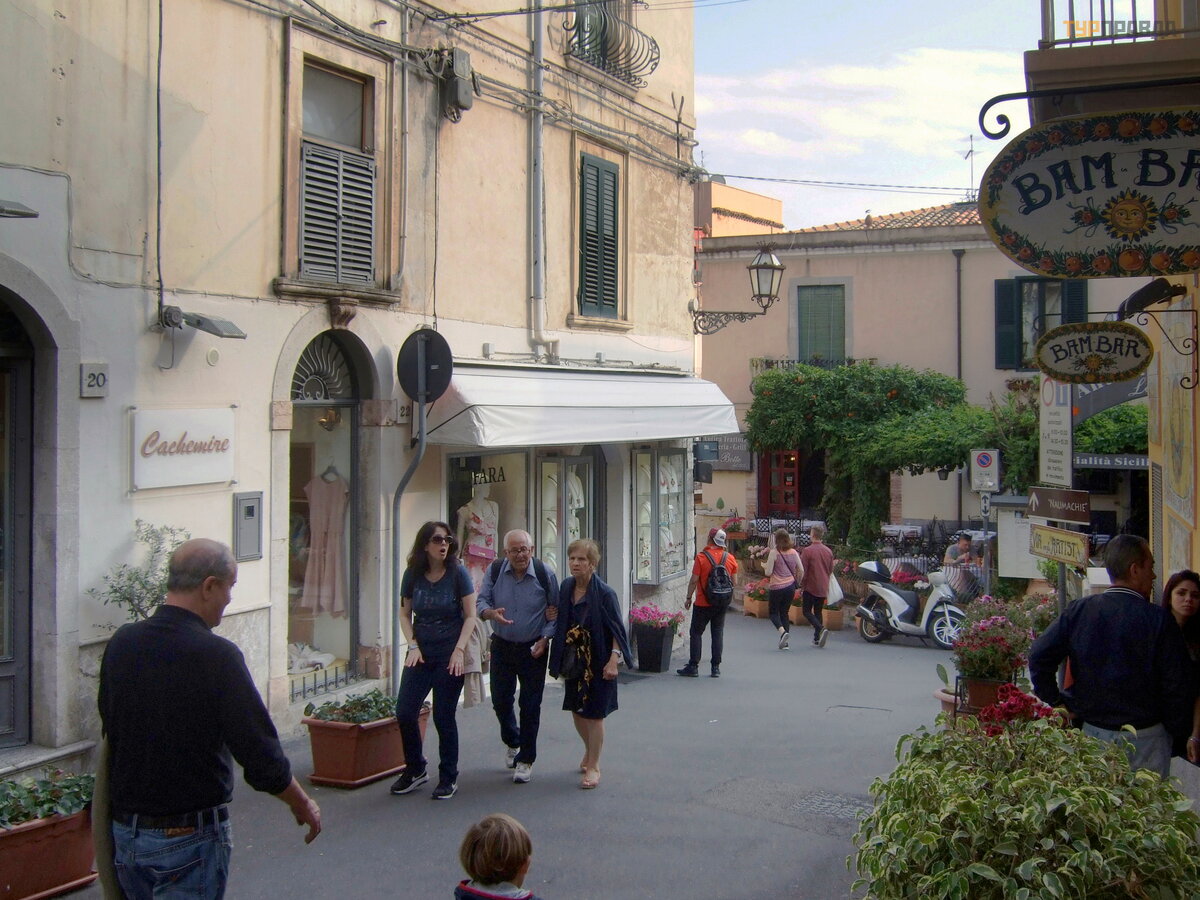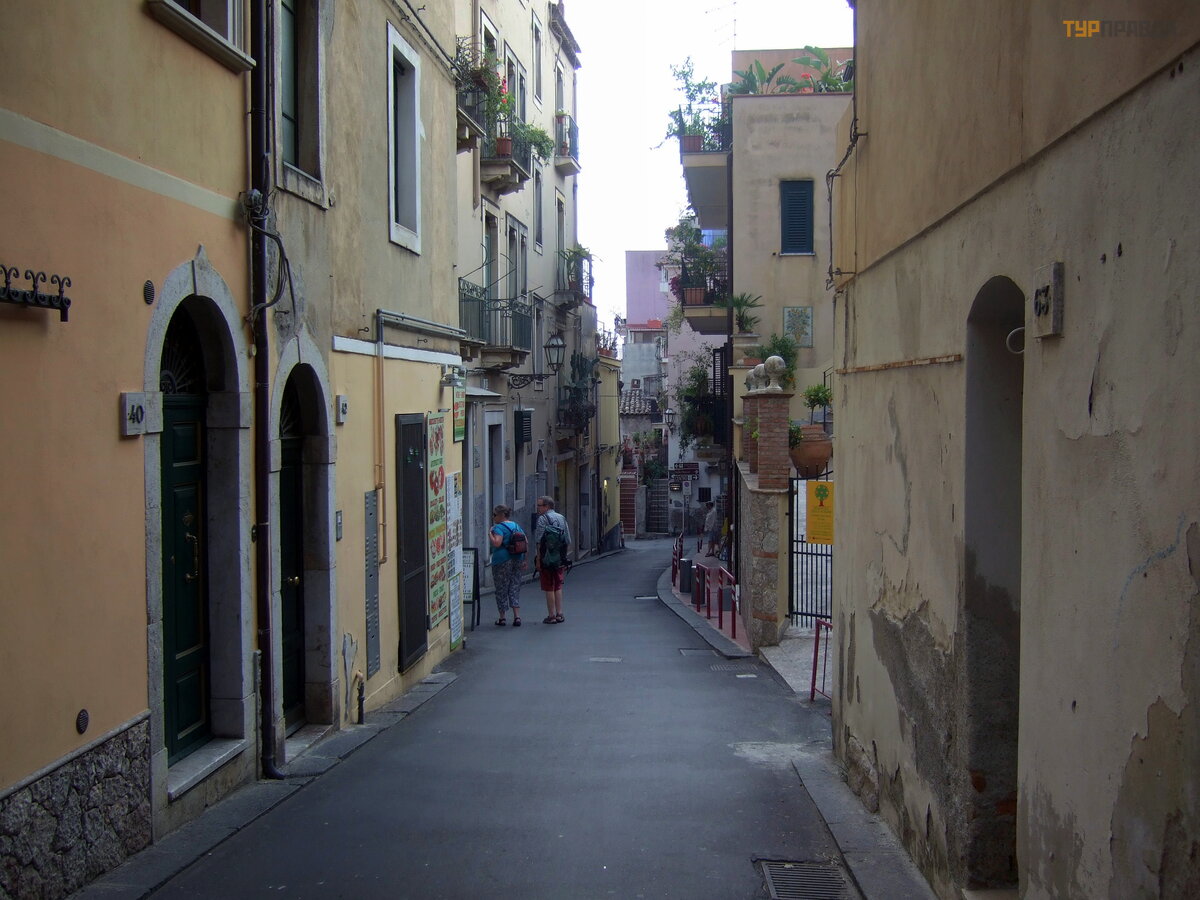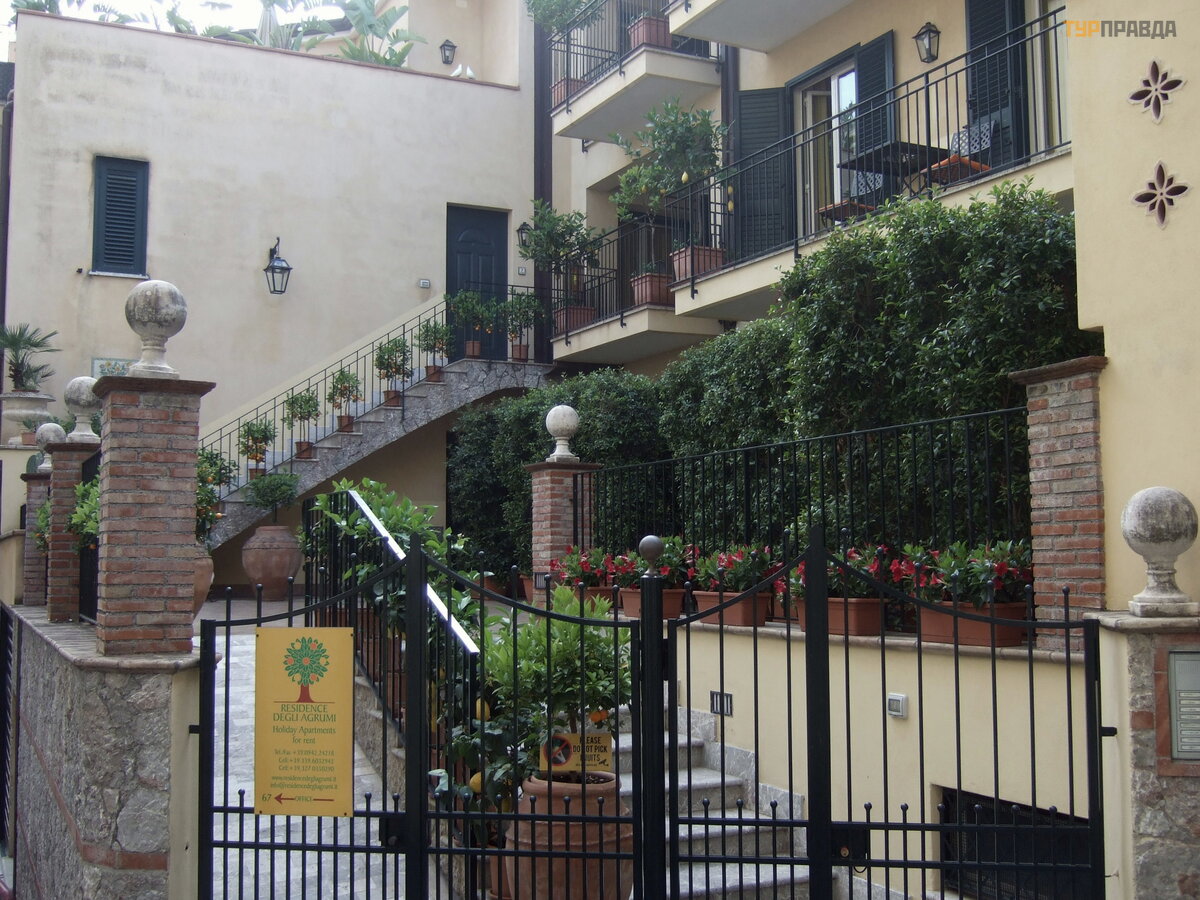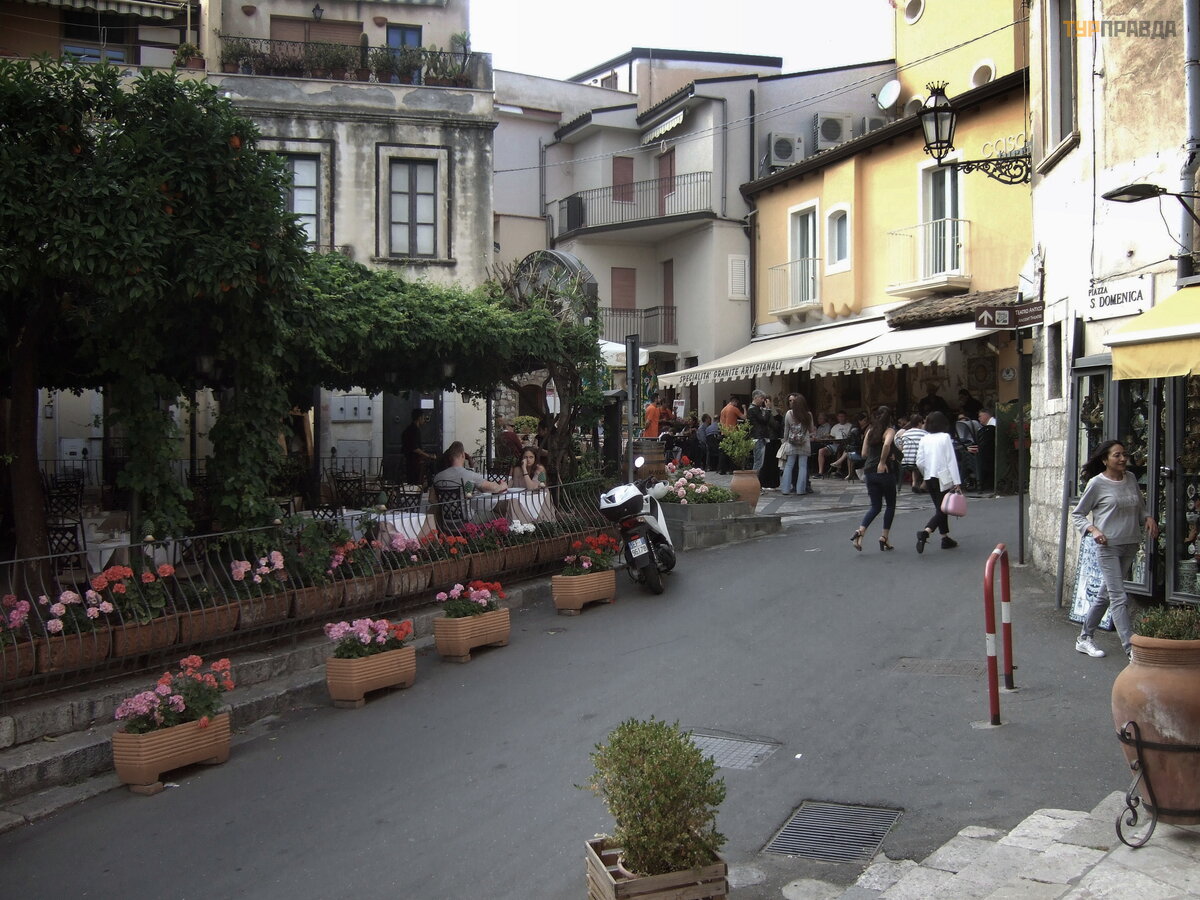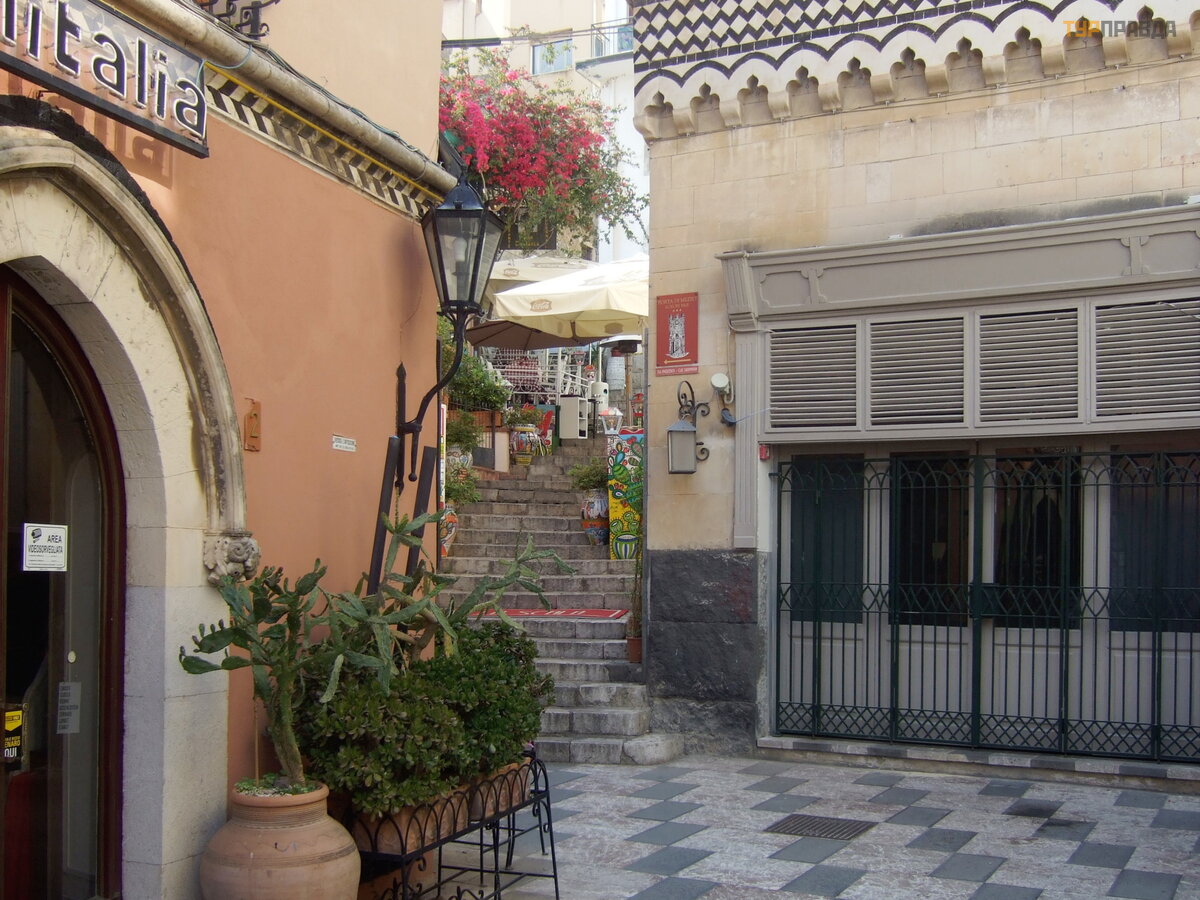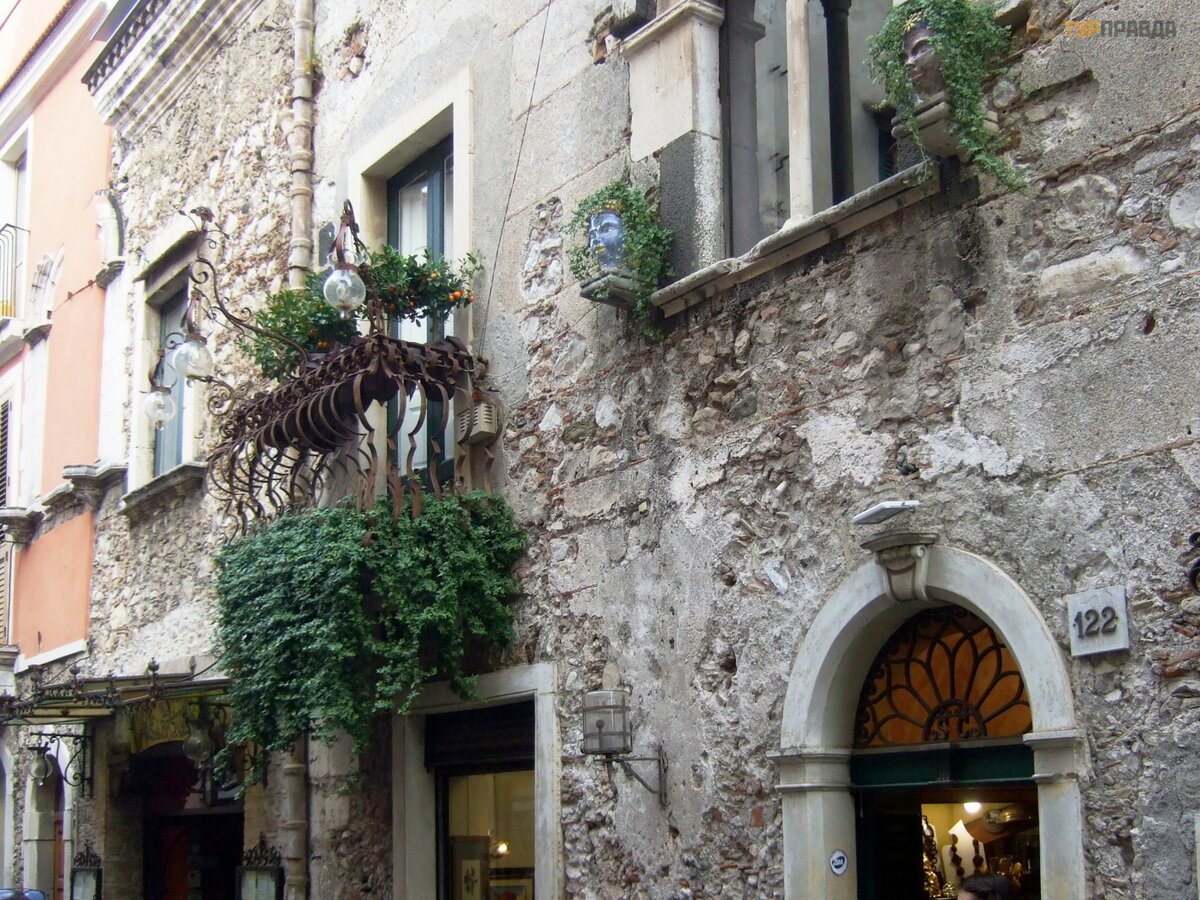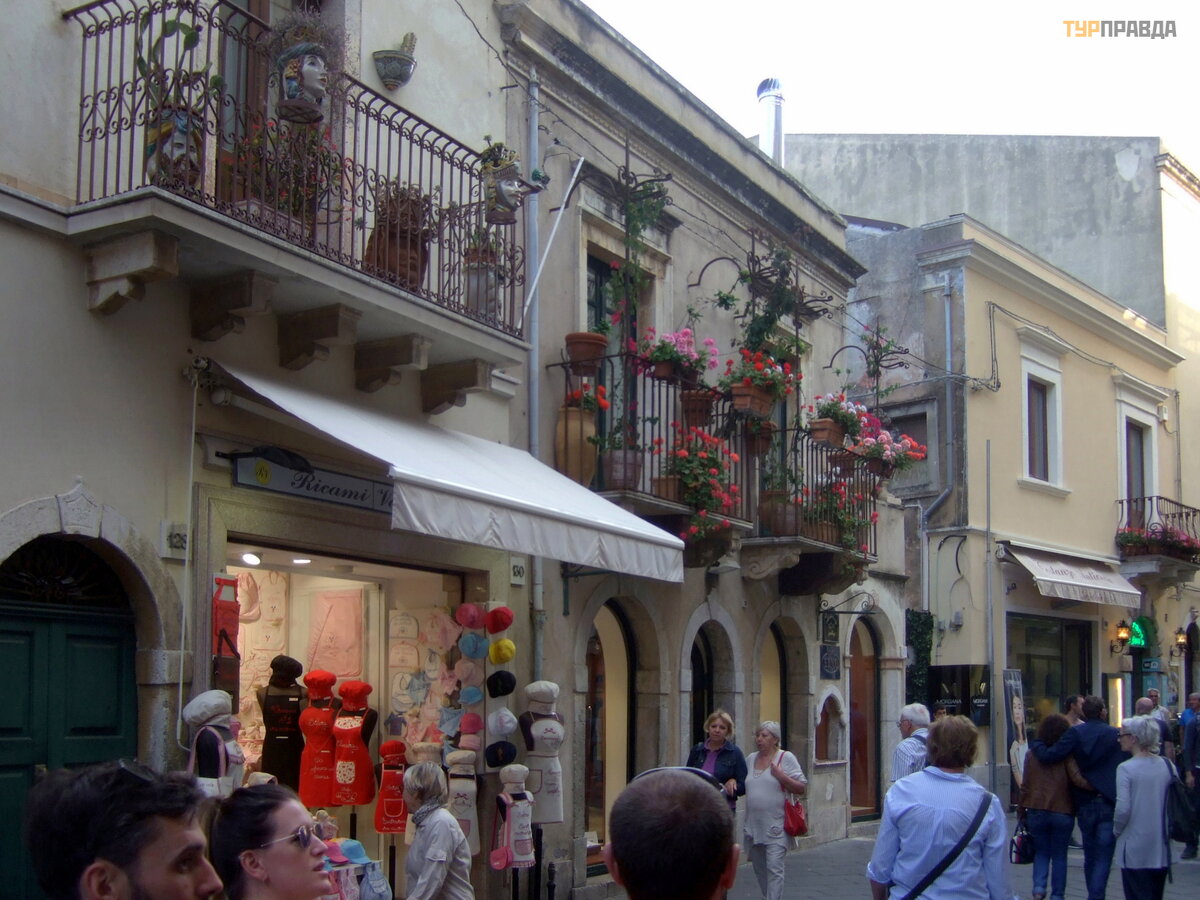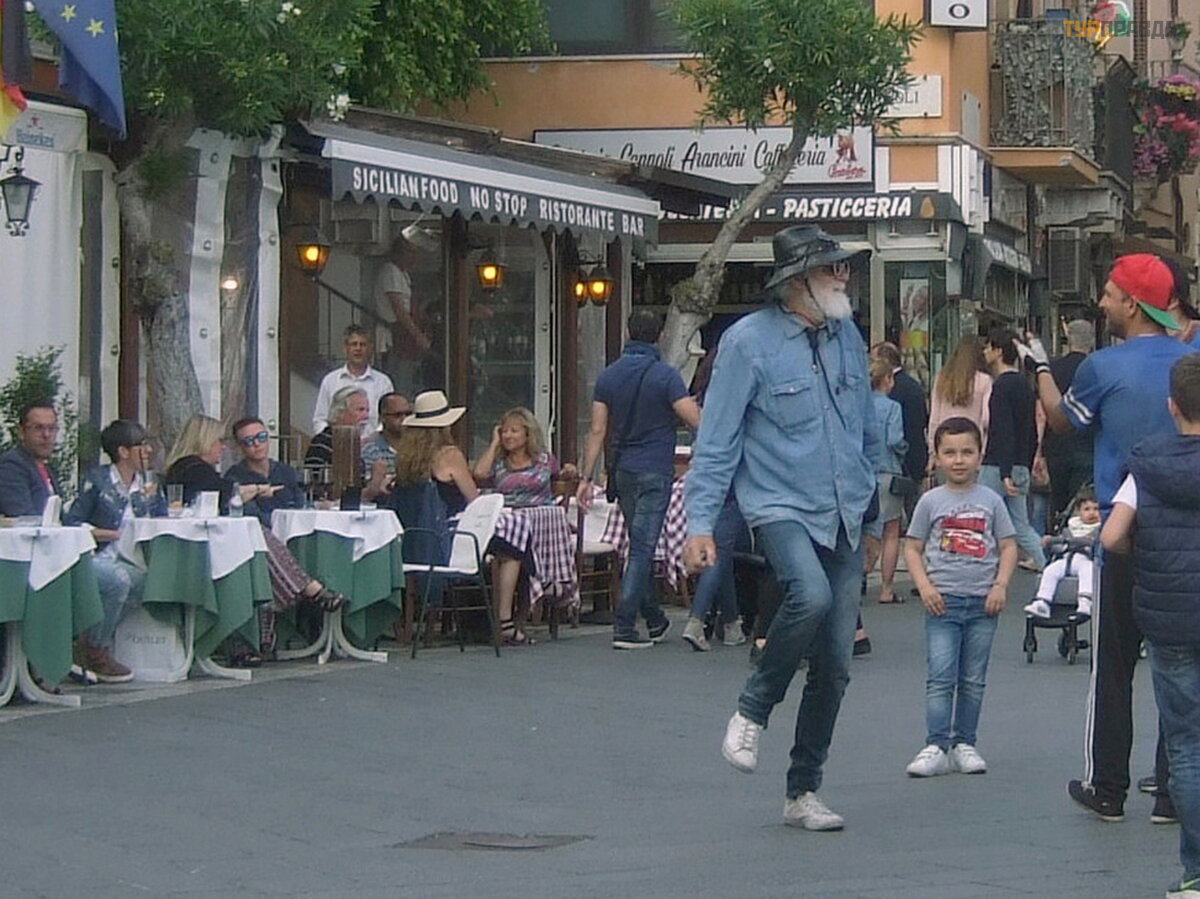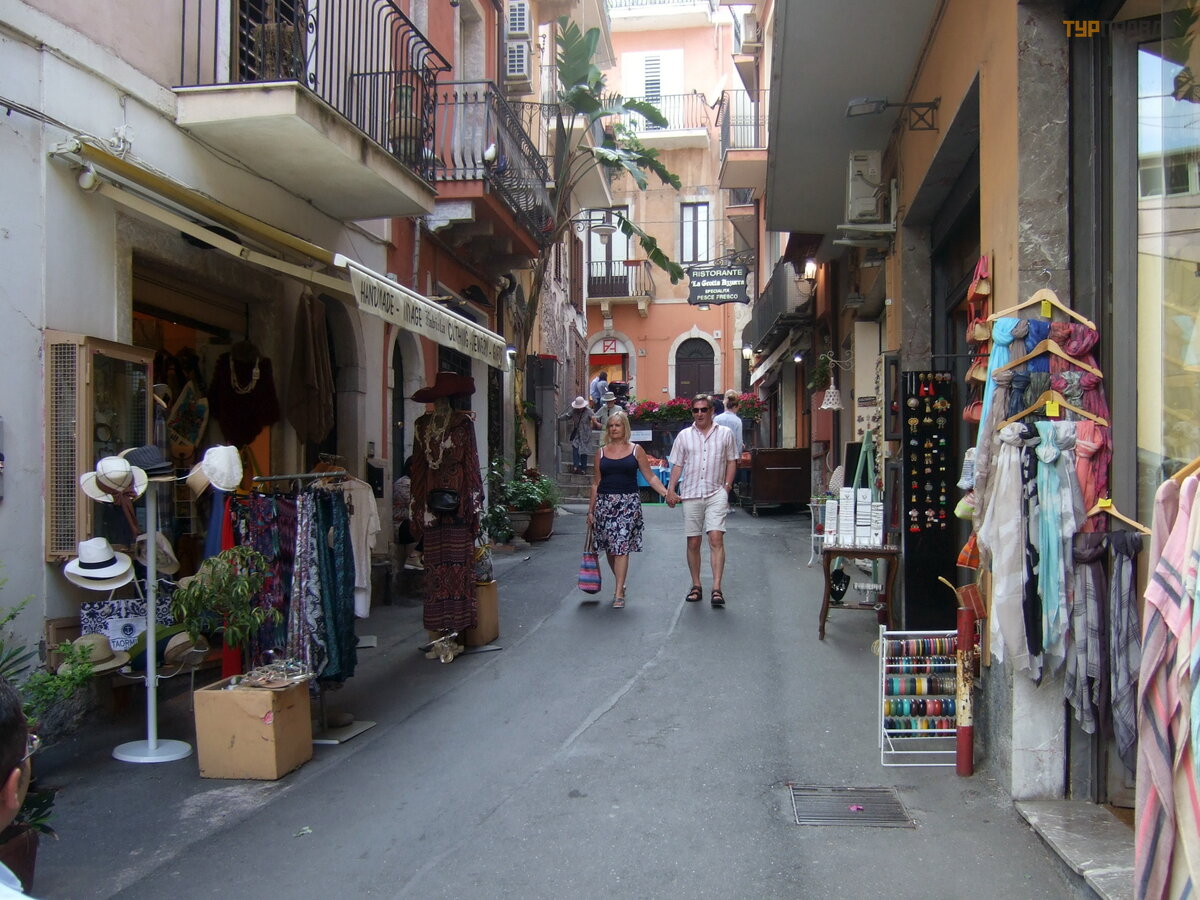Sicily. Part 3. Taormina

Sicily. Part 1. Giardini Naxos >>>
On Saturday there was a market day in Giardini Naxos, not far from our hotel, then we still walked around the city before lunch. After lunch and swimming in the pool, we went to Taormina. There are free shuttles from the hotel back and forth, you just need to sign up at the reception in advance. You can also take a city bus, the price is 1.3 euros, it takes about 25 minutes to drive, because the bus has many stops along the streets of Giardini Naxos.
Taormina is considered by many to be the most beautiful city in Sicily, a very popular and lively place. The beaches are at the bottom, so vacationers there either go down and up for a long time along the roads-stairs, or on the cable car (for some reason called the “funicular” there). The cost of a one-way trip was then 3 euros, there are weekly travel cards.
Our shuttle brought us to the city gates,
Porta Catania is the entrance to the Old Town. The gate dates back to the 14th century, but was built from the stones of an ancient building whose ruins are shown nearby.
To the right of the gate, along the preserved section of the fortress wall, we exit to Palazzo Duca di Santo Stefano, the residence of the Dukes of Santo Stefano built in the 14th century.
Taormina is a small town, there are few special attractions, but it is very picturesque. Getting around it in a couple of hours is not difficult.
From the Port of Catania begins the main street of Taormina - Corso Umberto, where squares, craft shops, shops, cafes and restaurants are located. The prices there, frankly, are not humane at all. It is along this street that we will continue our walk around Taormina. The main places for sightseeing and visiting are located on both sides of it - just walk along the street and periodically turn into lanes.
Above the Church of Chiesa del Carmine di Taormina:
The Cathedral of St. Nicholas (Dom San Nicolò ), which looks like a fortress, is located on Piazza Duomo. The cathedral, built in the 13th century, is a mixture of medieval architecture and baroque elements that were added to the original building in the 17th century.
Opposite the Cathedral, Pony Fountain. It was built of Sicilian marble in 1635 and is one of the symbols of Taormina. Above is a statue of a centaur, but with a female torso.
Admire the picturesque streets along Corso Umberto:
The Middle Gate (Porta di Mezzo) from the 15th century bisects Corso Umberto. The gate tower has battlements and the Clock Tower (Torre dell'Orologio). Built into the wall in the twelfth century, the clock has been destroyed several times over the years but has been rebuilt.
In the arch of the gate there is an icon of the Byzantine Madonna not made by hands. They say that the icon was found right in the wall, under layers of paint and plaster.
Behind the gate, Taormina's busiest place is the 9 April Square (Piazza IX Aprile). It is interesting that the inhabitants of the city gave this name when they learned about the landing of Garibaldi's troops in Sicily, although in fact this rumor turned out to be false, he landed only a month later.
Here is an observation deck with beautiful views of Etna and Giardini Naxos. It's a pity,
that in the afternoon Etna is often obscured by clouds.
The beach and the island of Isola Bello are visible in the sea:
This is a view of the Daniel Hotel:
There are two churches on the square at once: a small Gothic church of St. Augustine (San Agostino) of the 15th century, which today is used as a library. . .
. . . and a church built in honor of St. Giuseppe (San Giuseppe) of the 17th century. The church was built in the late 16th - early 17th centuries in the Baroque style.
A cross is visible from above on the mountain - this is Santuario Madonna della Rocca, the church of the Madonna in the mountains. There is a staircase with sculptures repeating scenes from the Way of the Cross.
Slowly moving on, looking up and down:
Next to Corso Umberto, there is a picturesque dilapidated wall built during the Roman Empire in the 1st century BC. It is said to be part of the arena where naval battles took place, or "Numachia". Houses were built on top of the Roman buildings, where the inhabitants of the city live.
Going further along the Corso Umberto, we will see another ancient Roman monument - the Odeon, the remains of a small ancient Roman amphitheater designed for 200 people. It was built before our era at the behest of Augustus Octavian.
Nearby is St. Catherine's Square (Piazza Santa Caterina), on which is the Chiesa di Santa Caterina Church of the same name, built in honor of the Great Martyr Catherine of Alexandria.
A little further away is Piazza Vittorio Emanuele. where the Corvaja Palace (Palazzo Corvaja), XV century, is located, in which the parliament of Sicily once sat. Now there is the Museum of Art and Folk Traditions of Sicily. There is also an information center where you can get a map of the city with sights.
The picturesque Via Teatro Greco begins from the same square. . .
. . . which leads to the ancient Greek theatre.
The theater was built in the 3rd century BC. e. , the diameter of the theater, designed for 10.000 spectators, was 109 meters. In 2017, a meeting of the heads of the G7 took place there. The cost of visiting the theater is 10 euros. But we didn’t go inside, we considered the price too high, the views of the surroundings and from Taormina are beautiful, besides, we recently saw several similar theaters in Greece. To complete the picture, I post a photo of the theater from the Internet. There is a city park next to the theater.
Moving along Corso Umberto:
We reached another medieval city gate - Porta Messina.
The gate looks like a high arch with the remains of ancient walls on the sides.
Behind the gate to the right there is a street that leads to the cable car to the sea and beaches. In winter, the cable car does not work, but the bus runs.
S. Pancrazio square in front of the gate. . .
. . . where you can see the excavations: a historical monument and an old basilica - the Church of San Pancrazio (Chiesa di San Pancrazio). The church is named after the patron saint of Taormina, the Holy Martyr Pankratius, and was built in the 16th-17th centuries.
Next is the bus station, from which a bus leaves every hour for Castelmola, a small town even higher than Taormina. Some enthusiasts overcome this path on foot uphill (4 km).
That, in fact, is the whole city of Taormina. We go back to our shuttle.
Slowly we got back to the Port of Catania.
There were also such colorful characters:
Basically, Taormina is a place for walking, parties, leisurely pastime.
A nice, beautiful town, like the scenery for some movie, but we only had half a day for it.
Continued here >>>
